 11/12/2011 06:18 11/12/2011 06:18 |
|
| | | OFFLINE | | Post: 23.928
Post: 6.498 | Registrato il: 28/08/2005
Registrato il: 20/01/2009 | Administratore | Utente Master | |
|


 See preceding page for earlier posts on 12/10/11.
See preceding page for earlier posts on 12/10/11.

 Bishop of Rome makes 12th
Bishop of Rome makes 12th
pastoral visit tomorrow
Translated from

December 10, 2011
The parish of Santa Maria delle Grazie in the Casal Boccone district in northwest Rome eagerly awaits the pastoral visit of Pope Benedict XVI tomorrow, the third Sunday of Advent, also known as Gaudete Sunday.


He will be welcomed on his arrival at 9:15 a.m. initially by the children of the parish gathered in the courtyard of the new parish church which now serves as their daily playground and center of recreational activities.
The Pope will celebrate Mass at 9:30, along with the parish priest, don Federico Monteforte, 58, and the 12 other parish priests in the prefecture, assisted by 15 ministrants.
After the Mass, the Pope will meet the parochial pastoral council, who, said Fr. Monteforte, "will tell the Pope that the parish residents dearest wish is to be good Christians".
But he said that "Our most intimate and truest meeting with the Holy Father will be around the Eucharist, and so we have paid special attention to the music during the Mass - to be sung by our 20-member choir - and the participation of elementary schoolchildren."
He said that the parish will be celebrating both the Pope's visit and their new church, finished in May last year, and one they had awaited for 36 years. Before that, they had been using the ground floor of a commercial building in the area since the parish was established in 1974. It was originally named for St. Dominic, but after the new church was completed, it was renamed Santa Maria delle Grazie.
He said that the parish has not suffered much from the current economic downturn - "most of our residents are artisans and employees" - but its charitable activities have been directed at immigrants and Rom (gypsies) in neighboring areas.
According to Marina Agnusdei, a 77-year-old retired barkeeper who works with the parochial Caritas, "There are few in the parish who need our help, but we help many Poles and Rumanians who live around the area. Our hospitality center is open every day and we are able to give out food packs and clothing."
She welcomed the Pope's visit for the encouragement and comfort it will give them.
The parish now counts with a charismatic community (Rinnovamento dello Spirito), and in January, the Neo-Catechumenals are starting their community.
The new meeting hall of the parish accommodates 150 persons, but they still need a multi-functional recreational area and sports field for the young people. Fr. Monteforte says the plans are ready for implementation as soon as the bureaucratic requirements are met.
The Holy Father will return to the Vatican in time for the noontime Angelus.
Benedict XVI has understandably focused his pastoral visits in Rome on fairly new parishes located in working class neighborhoods, usually in the periphery of Rome. And this has meant that most of the fairly new parish churches he has visited have been built in an indifferent almost-industrial utilitarian style, and at least a couple are ultra-modern architectural showpieces... I don't know what the Vatican's new campaign against 'bad' church architecture will accomplish in this respect. Rome has perhaps the largest number of new churches per capita anywhere in the world.
[Modificato da TERESA BENEDETTA 11/12/2011 06:34] |
| |
|
| |
 11/12/2011 15:53 11/12/2011 15:53 |
|
| | | OFFLINE | | Post: 23.929
Post: 6.499 | Registrato il: 28/08/2005
Registrato il: 20/01/2009 | Administratore | Utente Master | |
|



 December 11, Third Sunday in Advent (Gaudete Sunday)
December 11, Third Sunday in Advent (Gaudete Sunday)
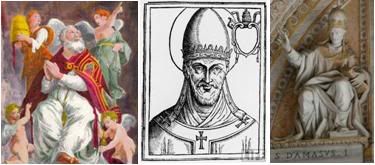 ST. DAMASUS (POPE DAMASUS I, 366-384) (b Lusitania [Portugal] ca 305, d Rome 384)
ST. DAMASUS (POPE DAMASUS I, 366-384) (b Lusitania [Portugal] ca 305, d Rome 384)
The son of a Roman priest, Damasus was described by his secretary St. Jerome as
“an incomparable person, learned in the Scriptures, a virgin doctor of the virgin
Church, who loved chastity and heard its praises with pleasure.” He served Pope
Liberius and was elected to succeed him in 366. But opponents elected an anti-Pope
Ursinus, and violent battles between the two camps followed, that ended only after
Valentinian became emperor and exiled Ursinus. Damasus commissioned Jerome to
translate the entire Bible into what became the first standard version of all 72 books,
the Vulgate. Damasus is also remembered for uncovering the Roman catacombs to pay
proper homage to the early Christian martyrs. He defended Christian orthodoxy
against Arianism and other heresies and was upheld by the Council of Constantinople
in 382. He strengthened the faith after it became the official religion of empire
with his liturgical and esthetic enhancement of the churches of Rome, and defended
the rights of the Papacy in the imperial setting.
Readings for today's Mass:
www.usccb.org/nab/readings/121110.shtml
THE POPE'S DaY
Pastoral visit to Casal Boccone
Sunday Angelus
Say a prayer for
Cardinal Foley, 76

December 11, 2011
Cardinal John Patrick Foley, Grand Master Emeritus of the Equestrian Order of the Holy Sepulchre of Jerusalem died today. He was 76. The Cardinal was diagnosed earlier this year with leukemia had returned to his home diocese of Philadelphia for treatment.
In his comments to Vatican Radio's Italian service, the Director of the Holy See Press Office, Father Federico Lombardi, said “everyone who had ever met Cardinal Foley admired and loved him for his kindness and for his spirituality.”
Father Lombardi also recalled the Cardinal’s work in the field of communication as President of the Pontifical Council for Social Communications saying, he was always well prepared and very competent.
He added, that he had just received in the last few days a letter from Cardinal Foley thanking him for a copy of the newly published book on the History of Vatican Radio.
Cardinal Foley is most familiar to the English-speaking world for having provided for more than 20 years the English-language commentary for the radio-TV broadcasts of the Christmas Mass and other significant liturgies from St. Peter's Basilica.[Modificato da TERESA BENEDETTA 11/12/2011 18:23] |
| |
 11/12/2011 17:47 11/12/2011 17:47 |
|
| | | OFFLINE | | Post: 23.930
Post: 6.500 | Registrato il: 28/08/2005
Registrato il: 20/01/2009 | Administratore | Utente Master | |
|

 The Pope to his parishioners:
The Pope to his parishioners:
'Be witnesses of love in a world
where God seems absent'
Translated from the Italian service of

December 11, 2011
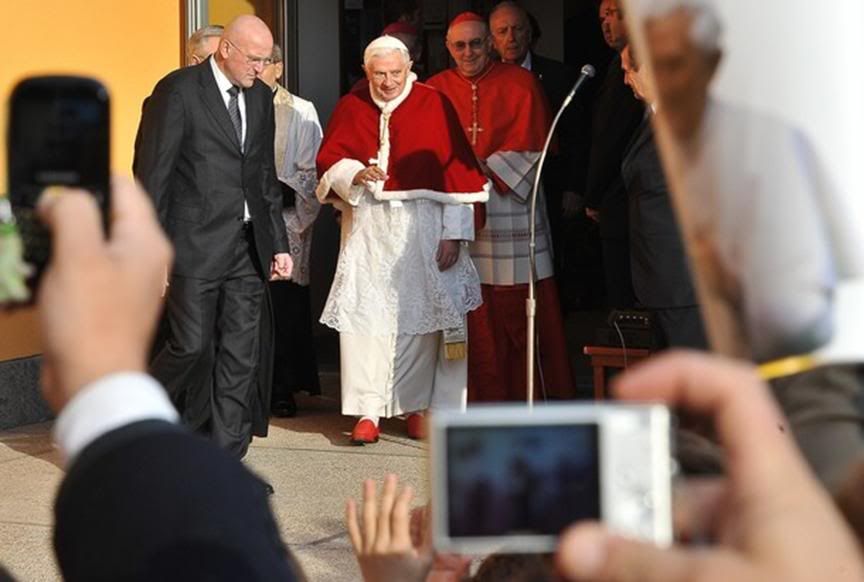
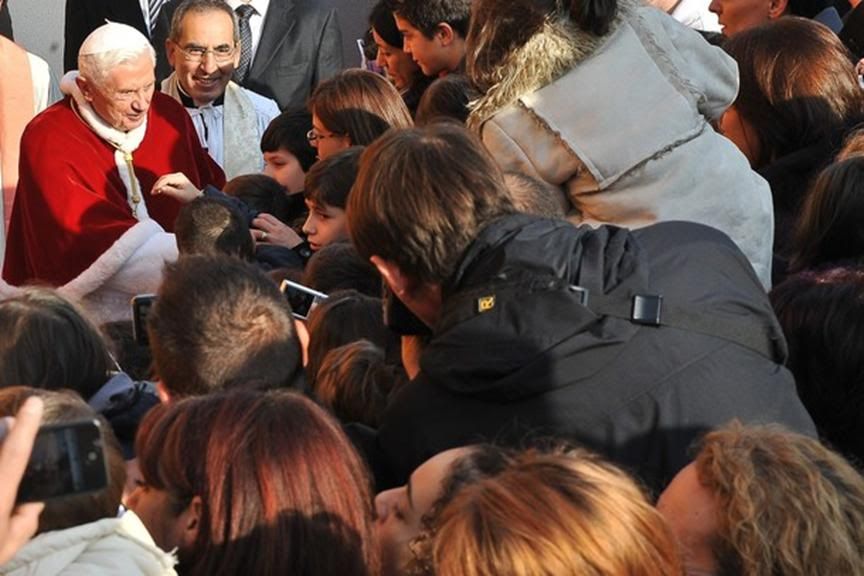
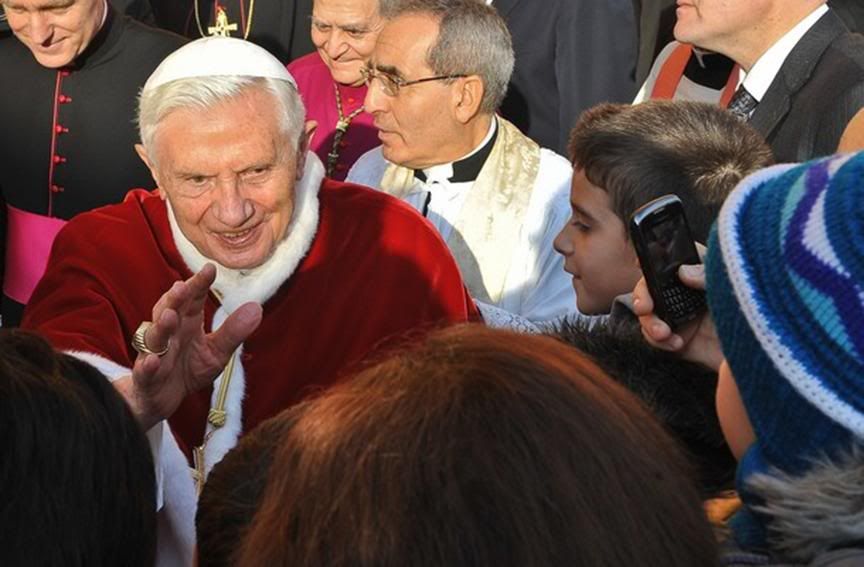
As originally scheduled, the Pope was first welcomed by the schilren of the parish gathered in the internal courtyard of the Church, at which time he addressed these remarks to them:
A good Sunday to you all! We know that Christmas is near, Let us prepare ourselves not only with gifts but with our hearts. Let us think that Christ our Lord is close, he enters our life and gives us light and joy. St. Paul tells us today to 'pray all the time'. Of course, he doesn't mean we should always be saying words of prayer, but that we should never lose contact with God in our heart. If we are in touch with him, then there is joy. So I wish you all the joy of Christmas and all the joy of the presence in our hearts of the Child Jesus who is God. Best wishes, a good Sunday, and a merry Christmas to all!
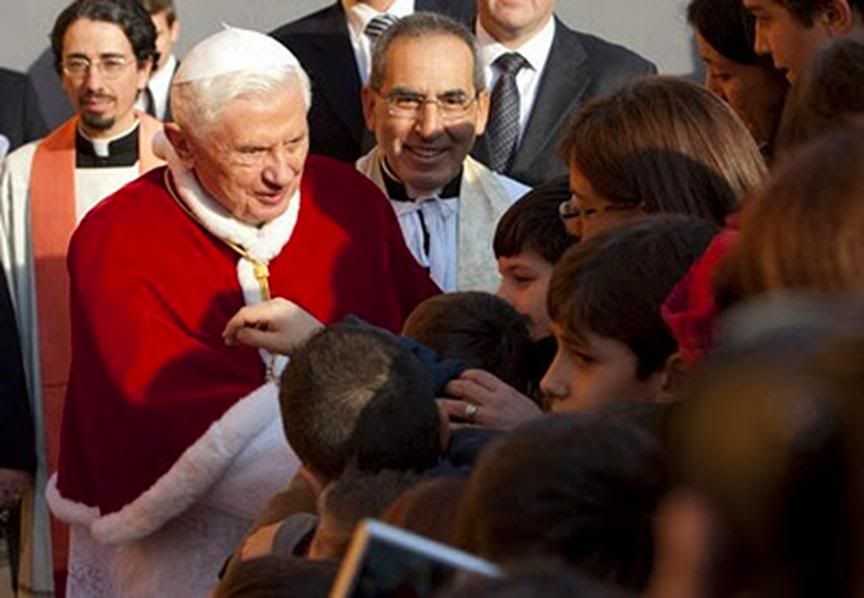
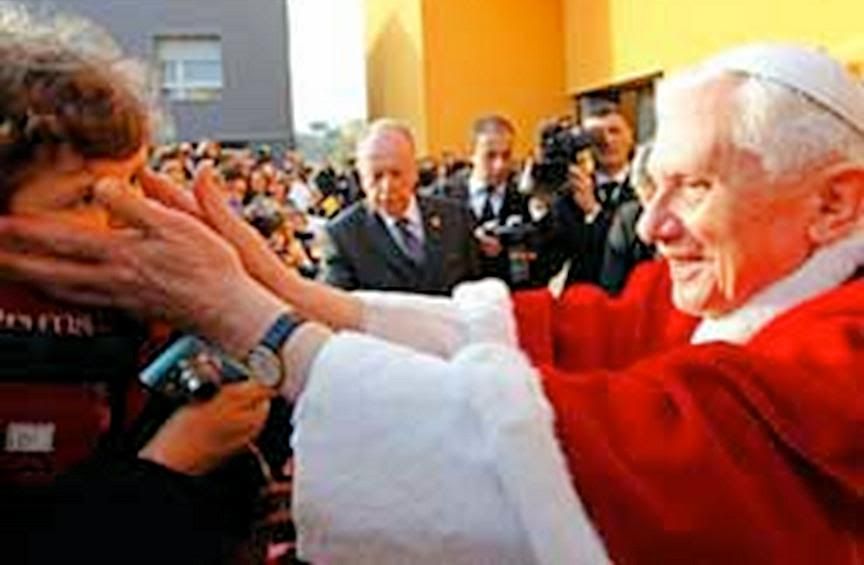
A very warm welcome this morning for the Pope at the Roman parish of Santa Maria delle Grazie, where he made a pastoral visit on the third Sunday of Advent.
Benedict XVI began his homily with the prophecy from Isaiah: "The spirit of the Lord GOD is upon me, because the LORD has anointed me; He has sent me to bring good news to the afflicted... to announce a year of favor from the LORD" (Is 61,1-2).
"These words," he said, "pronounced so many centuries ago, "resound very actually to us today, while we are in mid-Advent, already in view of the great Solemnity of the Nativity. They are words that rekindle hope, prepare us to receive the salvation of the Lord, and announce the inauguration of a time of grace and liberation".
"Advent," he said, "is precisely a time of waiting, of hope, and of preparation for the visit of the Lord. To this task, we are invited by the figure and the preaching of John the Baptist, as we heard in the Gospel proclaimed earlier (cfr Jn 1,6-8,19-38).
"John retreated to the desert to live a very austere life and by his very life, to invite the people to conversion. He conferred a baptism of water. a unique rite of penitence which distinguished it from the multiple rites of exterior purification by the various sects of his time.
"Who then was this man? Who was John the Baptist? His response was of a surprising humility. He was not the Messiah, he was not the light. He was not Elijah returned to earth, nor the awaited great prophet. He was a precursor, a simple witness, totally subordinate to him whom he was announcing".
He was 'a voice in the wilderness", he added extemporaneously. "Likewise today, in the deserts of the big cities of this world where we see the absence of God, we need voices that simply announce to us: 'There is a God, and he is always near to us even if he seems absent'. (The Baptist) was a voice in the desert, a witness to the light, and this touches us to the core because in this world with so many shadows, so much darkness, we are called to be witnesses to the light. This is our mission in Advent: to be witnesses to the Light, and we can be thus only if we carry the Light in us, not just that we are sure there is Light, but that we have seen that Light".
The Pope then thanked Cardinal Agostini Vallini, his Vicar General in Rome, and the entire parish community as well as "all the residents of the neighborhood, especially the aged, the sick, persons who are alone and are in difficulty, without forgetting the large Filipino community within the parish which participates actively in the fundamental events of community life".
[ The Pope went on to enumerate the various parochial activities and initiatives which he praised.]
He praised activities like prayer meetings, lectio divina and Eucharistic Adoration as "initiatives that are invaluable for spiritual growth at the personal and community levels".
"But I wish to remind you of the importance and centrality of the Eucharist. The Holy Mass must be the center of your Sundays, which must be rediscovered and lived as a day for God and the community, a day on which to praise and celebrate him who who was born for us, died and resurrected for our salvation, and asks us to live together in joy, to be a community that is open and ready to welcome every person who is alone or in difficulty. Do not lose the sense of Sunday and be faithful to the Eucharistic encounter. The first Christians were ready to give their life for this".
He spoke of their role in the new evangelization.
"It is my duty to ask you to be vigilant and to know in depth the reasons for our faith and for the Christian message as it has been transmitted to us with a guarantee of authenticity by the bimillennial tradition of the Church.
"Continue the work of evangelization with catechesis and correct information on what we believe, what the Catholic Church announces. Propose with clarity the truths of Christian faith, and be ready to respond to whoever asks you the reason for the hope that you have" (1Pt 3,15).
"Live the language understandable to all of love and brotherhood, without forgetting your duty to purify and strengthen your own faith in the face of dangers and traps which threaten it in these times.
"Overcome the limits of individualism, of closing in upon yourselves, the fascination of relativism which considers every behavior permissible, the attraction of certain forms of religious sentiment which exploit the most profound needs and aspirations of the human soul by proposing illusory prospects of easy relief.
"Faith is a gift of God, but it demands our response, a decision to follow Christ not only when he heals or relieves us, but even when he speaks of the love that means giving oneself if necessary".
He spoke of the need to bear witness through charity, which, he said, should characterize the life of the community.
"In these years, you have seen the number of your members grow rapidly, but you have also seen the arrival of many people in difficult conditions who need you, your material help, but also and above all, your faith and witness as believers. Act so that the face of your community may always express concretely God's love which is rich in mercy and invites us to go to him with trust".
He had special words of affection for the children and young people of the parish. "The today and tomorrow of history, and the future of the faith are entrusted specially to you who are the new generations. The Church expects much from your enthusiasm, your ability to look ahead, to be inspired by ideals, and your desire for radical choices in life. Your parish is with you, and I wish you all to feel my encouragement".
Finally, the Pontiff recalled the invitation to rejoice addressed by St. Paul to the Thessalonians, "Brothers, rejoice always" (1Ts 5,16) which "marks this Sunday, commonly called Gaudete. It resounds from the first word of today's entrance antiphon: 'Rejoice always in the Lord: I repeat, rejoice! The Lord is near' - words that S. Paul wrote from prison".
'Yes," the Pope concluded, "we are joyful because the Lord is near, and in a few days, on the night of the Nativity, we will celebrate the mystery of his birth. Mary, she who first heard the angel's invitation - 'Rejoice, (you who are) full of grace, the Lord is with you' (Lk 1,28) - shows us the way to reach true joy, that which comes from God. Santa Maria delle Grazie, Mother of Divine Love, pray for us. Amen."


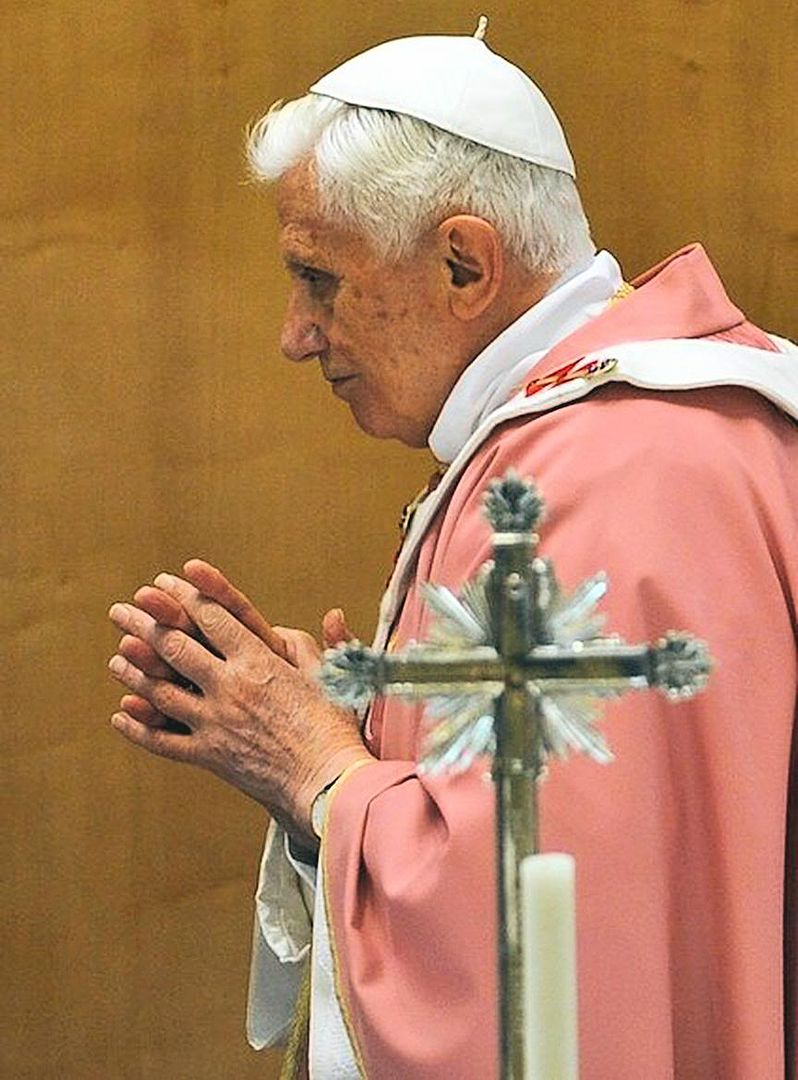
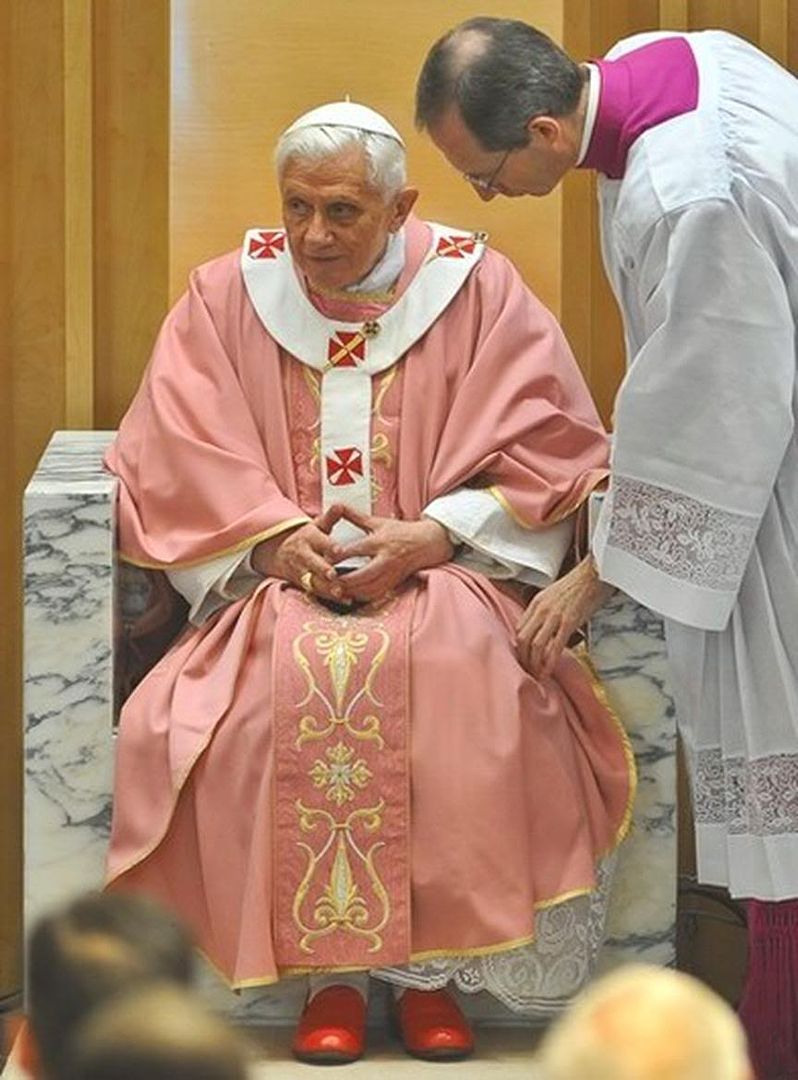
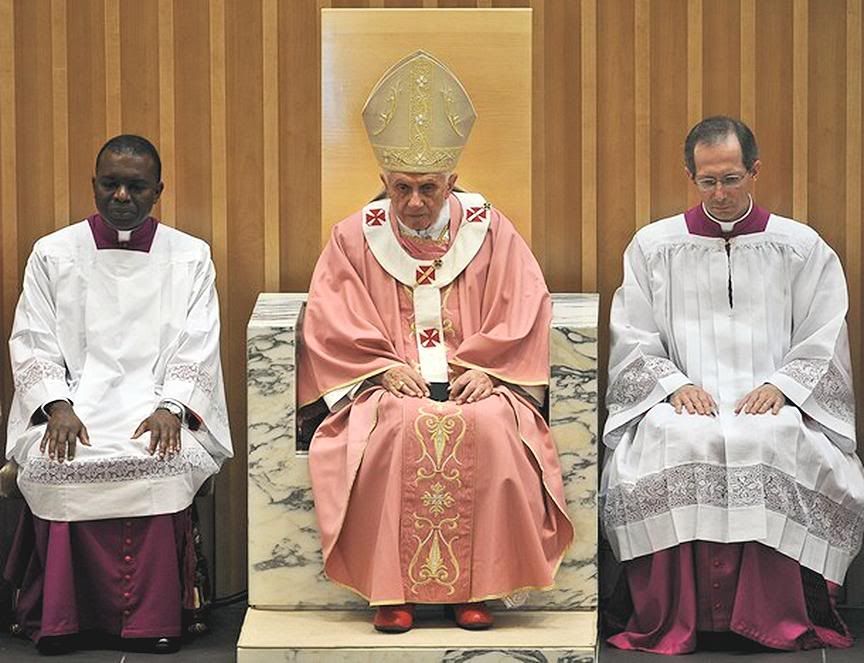
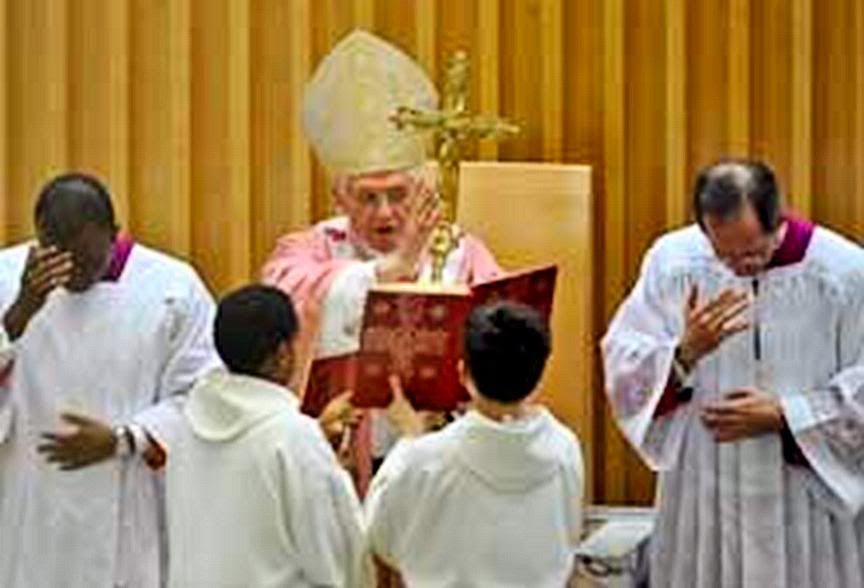
Dear brothers and sisters of the Parish of Santa Maria delle Grazie:
We earlier heard the prophecy of Isaiah: "The spirit of the Lord GOD is upon me, because the LORD has anointed me; He has sent me to bring good news to the afflicted... to announce a year of favor from the LORD" (Is 61,1-2).
These words, pronounced so many centuries ago, resound more actual than ever for us today, while we are midway through Advent and almost in sight of the great Solemnity of the Nativity. They are words that reawaken hope, prepare us to welcome the salvation of the Lord, and announce the inauguration of a time of grace and liberation.
Advent is precisely a time of waiting, of hope, and of preparation for the Lord's visit. We are invited to this task by the figure and the preaching of John the Baptist, as we heard in the Gospel proclaimed just a while ago (cfr Jn 1,6-8,19-28).
John had retreated to the desert to live a very austere life and to invite, through his way of life, the people to conversion. He conferred a baptism of water, a unique rite of penitence that was distinct from the multiple rites of exterior purification practised by the sects in his time.
Who then is this man? Who is John the Baptist? His response was of a surprising humility. Ne was not the Messiah, he was not the light. He was not Elijah returned to earth, nor the great prophet who was awaited. He was the precursor, a simple witness, totally subordinate to him whom he announced.
He was a voice in the desert, just as today, in the desert of the world's large cities, of the great absence of God, we need voices that will simply tell us, ""There is a God, he is always close to us even when he seems absent".
He was a voice in the desert and a witness to the light - and this touches us to the core, because in this world of so many shadows, so much darkness, we are all called to be witnesses to the light.
This is our mission at Advent time: to bear testimony to the light, and we can be such witnesses if we carry the light within us, if we are not just sure that there is light, but that we have seen it.
In the Church, in the Word of God, in the celebration of the Sacraments - in the Sacrament of Confession, with the forgiveness we receive, in the celebration of the Holy Eucharist, where the Lord gives himself into our hands and hearts - we touch the light and receive this mission: to be witnesses today that there is light, and to carry that light in our time.
Dear brothers and sisters! I am very happy to be among you on this beautiful Sunday - 'Gaudete' - the Sunday of joy that tells us, "Even in the midst of so much doubt and difficulty, joy exists because God exists and is with us".
I heartily greet the Cardinal Vicar, the Auxiliary Bishop of the sector, your parish priest, don Domenico Monteforte, whom I thank not just for the kind words he addressed to me in the name of everyone here, but also for the beautiful gift of recounting the history of the parish.
I greet the parish vicar, and the religious communities: The Apostle Sisters of La Consolata, the Maestre Pie Venerini, and the Guanellians. They are among the valuable presences in your parish and a great spiritual and pastoral resource for the life of the community, as witnesses to the light.
I greet all those who are involved in parish activities: I refer to the catechists - whom I thank for their work -, to the members of prayer groups animated by the movement, Renewal of the Holy Spirit, and to the young people of the Ardent Marian Youth movement.
I extend my thoughts to all the residents of this district, especially to the aged, the sick, persons who are alone and in difficulty, without forgetting the numerous members of the local Filipino community who are well settled here and actively participate in the events that are fundamental to community life.
Your parish was born in one of the typical once-agricultural suburbs of Rome, and was canonically established in 1985 with the beautiful name of Santa Maria delle Grazie. It had taken its first steps in the 1960s when, at the initiative of a group of Dominican priests, led by the unforgettable Fr. Gerard Reed, a small chapel was set up in a family home, a small chapel that was then transferred to a larger space which functioned as the parish church until 2010.
As you know, on May 1 last year, the building in which we are celebrating the Eucharist was dedicated. This new church is a privileged space in which to grow in the knowledge and love of him who in a few days we shall welcome with joy on his Nativity.
As I look at this church and the other parish buildings, I see the fruits of patience, dedication, love - and with my presence, I wish to encourage you to make real in even better ways that church of living stones that you are. Each of you should feel he is an element of this living edifice.
The community is built with the contribution that everyone offers, with the commitment of everyone. I am thinking especially of your involvement in the fields of catechesis, of liturgy and of charity, which are the main support columns of Christian life.
Yours is a young community - I saw that when greeting your children. It is young because it is composed, as the new settlements are, of young families, and because, thanks be to God, there are so many children and adolescents.
I sincerely wish that through the contributions of competent and generous persons, your educational task may develop even better, and that your parish, with the help of the Vicariate of Rome, will soon have a well-designed recreation center, with enough space for play as well as for meetings, to satisfy the requirements of growth in the faith and healthy social activities for the younger generations.
I am happy at what you are doing to prepare children and young people for the Sacraments. The challenge we are facing is to design and purpose a true and proper course of formation in the faith, which involves all those who are starting their Christian initiation, helping them not just to receive the Sacraments but to live them in order to be true Christians.
This purpose, as we heard in the first Reading today, must be lived" justice should germinate as seed germinates in the earth. In living the Sacraments, justice germinates, and so do law and love.
In this regard, the diocesan pastoral verification now taking place, which is concerned precisely with Christian initiation, is a propitious occasion for experiencing and living in depth the Sacraments we receive, like Baptism and Confirmation, and those that we approach to nourish our journey of faith, Penitence and the Eucharist.
That is why, it is necessary, first of all, to be attentive to our relationship with God, through listening to his Word, responding to the Word in prayer, and the gift of the Eucharist.
I know that in the parish, you have been holding prayer meetings, lectio divina, and Eucharistic adoration - these are initiatives that are invaluable for spiritual growth at the personal and community level.
I warmly exhort you to take part in these initiatives in greater numbers. In a special way, I wish to call attention to the importance and the centrality of the Eucharist.
The Holy Mass should be the center of your Sundays, a day that must be rediscovered and lived as the day of God and of the community, a day on which to praise and celebrate him who was born for us, who died and resurrected for our salvation, and who asks us to live together in joy, and to be a community that is open and ready to welcome every person who is alone or in difficulty.
Do not lose the meaning of Sunday and be faithful to the Eucharistic encounter. The first Christians were ready to give their life for this. They knew that the Eucharist is life, and it makes us live.
Coming to you, I cannot ignore that in your territory, a great challenge is posed by religious groups who present themselves as the true repositories of Gospel truth. In this respect, it is my duty to urge you to be vigilant and to know in depth the reasons for your faith and the Christian message, as it has been handed down to us with a guarantee of authenticity by the bimillennial tradition of the Church.
Continue your work of evangelization with catechesis and correct information on what the Catholic Church believes and announces - offer clearly the truths of the Christian faith. You must be ready, as St. Peter says, to respond to those who ask you "the reason for your hope" (1Pt 3,11).
Live the language of love and brotherhood that is understandable to all, but without forgetting the task of purifying and strengthening your own faith in the face of dangers and traps that could threaten it in these times.
Go beyond the limits of individualism, of closing in upon yourself, the fascination of relativism, which considers every behavior permissible, the attraction of certain forms of religious sentiment which exploit the most profound needs and aspirations of the human soul, by proposing illusory prospects of easy solutions.
Faith is a gift of God, but it requires our response, the decision to follow Christ not just when he heals and brings relief, but even when he speaks of love that means giving oneself if necessary.
Another point which I wish to emphasize is the witness of charity which should characterize the life of your community. In recent years, you have seen your number grow rapidly, but you have also seen many persons arrive who are in difficulty and situations of distress - who need you, your material help, but also and above all, your faith and your witness as believers. Act so that the face of your community may always concretely express God's love which is rich in mercy and invites us to go to him with trust.
I wish to address a special word of affection and friendship to you, dearest boys, girls and young people who are listening to me, as well as to those of your age who live in this parish. The today and tomorrow of history and the future of the faith are entrusted to you in a special way, to you who are the new generations.
The Church expects much from your enthusiasm, your ability to look ahead, to be inspired by ideals and by your desire for radical choices in life. The parish is with you, and I want you to feel my encouragement as well.
"Dear brothers, rejoice always" (1Ts 5,16) - This invitation to joy, from St. Paul to the Christians of Thessalonica at that time, also characterizes today's Sunday, called 'Gaudete' from the first words of the Entrance Antiphon to the Mass.
"Rejoice in the Lord always. I shall say it again: rejoice! Your kindness should be known to all. The Lord is near" - St. Paul wrote this to the Christians of Philippi (cfr Phil 4,4-5), but he says it also to us.
Yes, we rejoice because the Lord is near, and in a few days, on the night of Christmas, we will celebrate the mystery of his birth. Mary - she who first heard the invitation from the angel: "Rejoice, (you who are) full of grace! The Lord is with you" (Lk 1,28) - shows us the way to reach true joy, that which comes from God. Santa Maria delle Grazie, Mother of Divine Love, pray for us all. Amen.
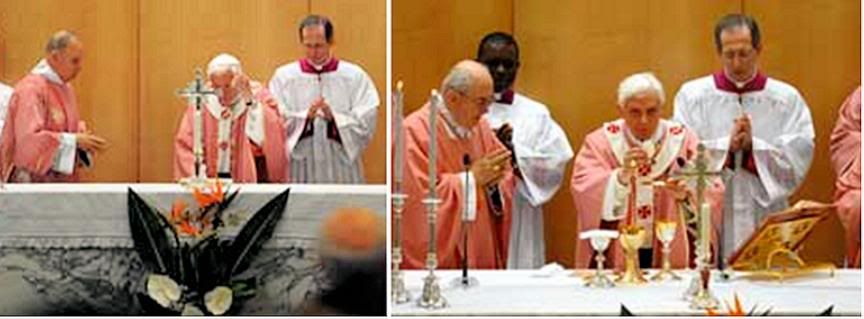
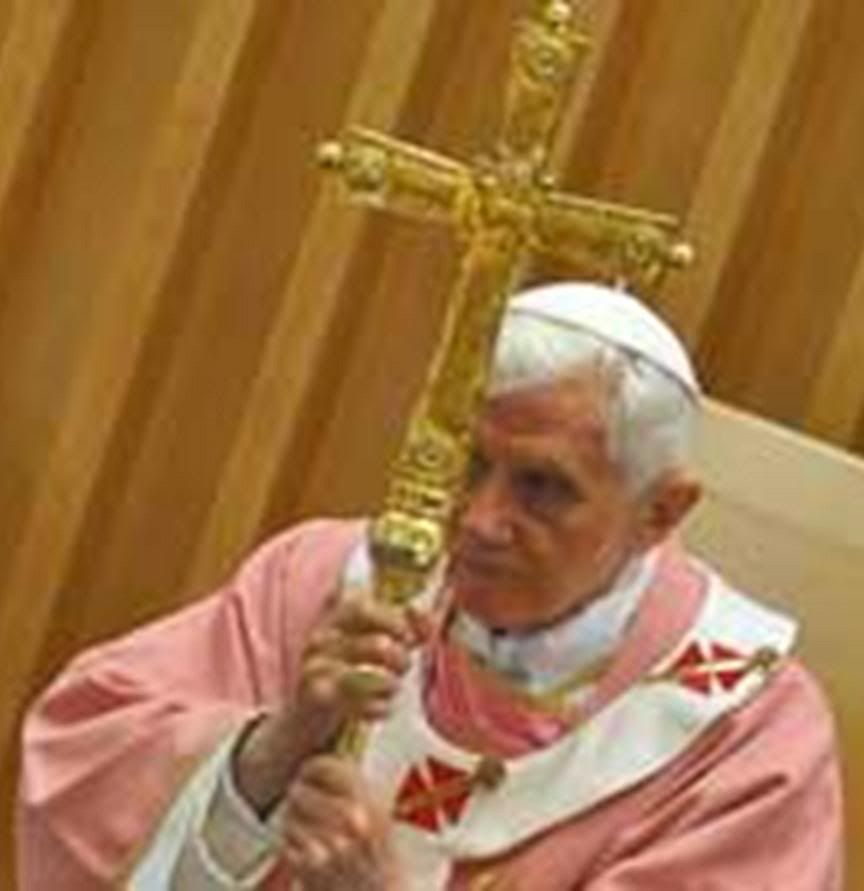 The last four photos are fuzzy enlargements of Vatican Radio thumbnails.
The last four photos are fuzzy enlargements of Vatican Radio thumbnails.

[Modificato da TERESA BENEDETTA 12/12/2011 09:01] |
| |
 11/12/2011 18:14 11/12/2011 18:14 |
|
| | | OFFLINE | | Post: 23.931
Post: 6.501 | Registrato il: 28/08/2005
Registrato il: 20/01/2009 | Administratore | Utente Master | |
|

 ANGELUS TODAY
ANGELUS TODAY
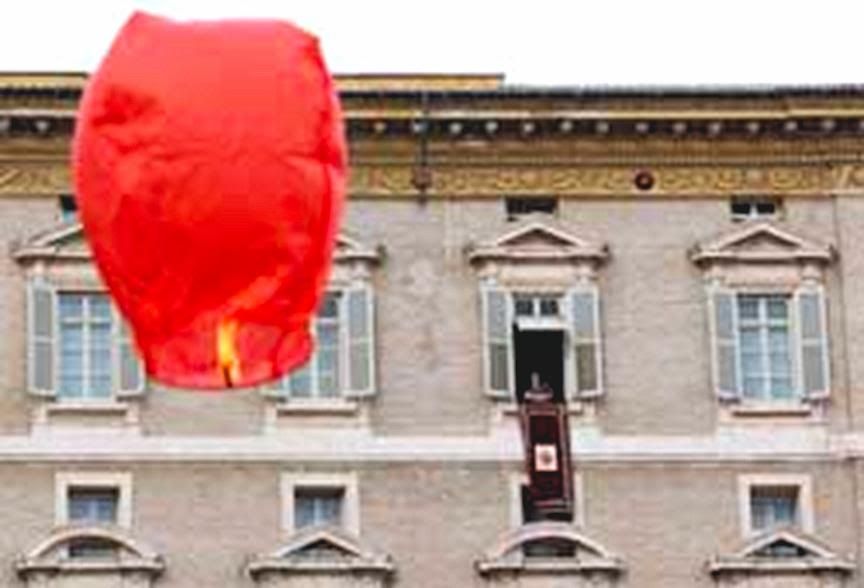 Pope Benedict on Gaudete Sunday:
Pope Benedict on Gaudete Sunday:
'Look to the light of Christ
not the lights of commercialism'

December 11, 2011
Pope Benedict began his Sunday at the Roman parish of Santa Maria delle Grazie where he celebrated Mass and underlined the importance of community spirit. He also referred to the season of Advent which was a theme he returned to back at the Vatican for the recitation of the Angelus.
He told the faithful in St Peter’s Square that Christians were called to live this period before Christmas without being distracted by commercial messages and by the festive lights even if low key as a result of the economic crisis.
Instead, he continued, they should look to Christ the “true light of the world”.
In this season, he said “ we should live waiting for Jesus, and not stop waiting for his coming.”
As is tradition on this particular Sunday of Advent, thousands of children with their parents gathered in St Peter’s Square for the traditional blessing of the “bambinelli”, the little statuettes of the baby Jesus that are placed in the manger of their home Nativity scenes.
To the children, the Holy Father had a special message. “Dear children,” he said, “when you pray in front of your Nativity scene, remember me as well, as I remember you. Thank you and Merry Christmas!”
Reflecting on this Sunday’s liturgy called “Gaudete” the Pope said, it was an invitation to a joyful and not a sad watchfulness.
The essence of true joy underlined the Pope is not having fun in order to divert ourselves from our responsibilities, which at times is important, but it is something much more, it is our ability to have a true relationship with God.
Before his pluri-lingual greetings to the faithful, the Pope recalled the anniversary of the Universal Declaration of Human Rights, and stressed that the first right is the right to life.
He also welcomed the representatives of the Movement for Life, who are in Rome for the ‘Mother of Teresa Prize’, which is awarded in memory of Chiara Lubich, founder of the Focolari Movement.
To English-speaking pilgrims, he said:
I am pleased to greet all the English-speaking pilgrims and visitors present today for this Angelus prayer. In today’s Gospel, we hear the voice of John the Baptist crying in the wilderness, encouraging us to prepare the way of the Lord. Through renewed faith, prayer and penance, may we too become authentic heralds of the Lord’s coming among us at Christmas. May God bless all of you!
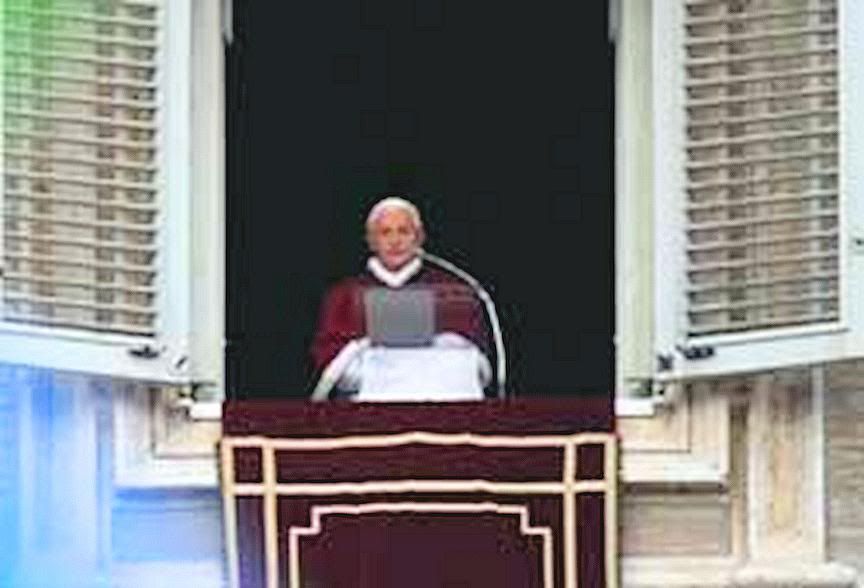
Here is a full translation of the Pope's words at the Angelus yesterday:
Dear brothers and sisters:
The liturgical texts of this season of Advent renew the invitation for us to live awaiting Jesus, not to cease expecting his coming, so we can keep ourselves in an attitude of openness and readiness for the encounter with him.
The vigilance of the heart which the Christian is called on to exercise always in everyday life, especially characterizes this time during which we prepare with joy for the mystery of the Nativity (cfr Advent Preface II).
The external environment offers the usual commercial messages, even if perhaps to a lesser degree because of the economic crisis. The Christian is invited to live Advent without being distracted by the lights, but knowing how to give the right value to things, in order to keep our interior sight on Christ.
If, in fact, we persevere, "vigilant in prayer and exultant in praise" (ibid.), our eyes will be able to recognize in him the true light of the world who comes to illuminate our shadows.
In particular, the liturgy for this Sunday, called Gaudete Sunday, invites us to rejoice, to a vigilance that is not sad but joyous. "Gaudete in Domino semper" - rejoice in God always - St. Paul writes (Phil 4,4).
True joy is not the fruit of diverting oneself, in the etymological sense of the word di-vertire, namely, to escape the tasks of life and its responsibilities. True joy is bound to something more profound. Of course, it is important to find time, in the daily pace of life that is often frenetic, for rest, for relaxation, but true joy is bound to our relationship with God.
Whoever has encountered Christ in his own life experiences in the heart a serenity and joy that no one and no situation can take away. St. Augustine understood this very well. In his search for truth, for peace, for joy, after having searched for them in vain in multiple things, he concluded with the famous statement that the human heart is restless, and cannot find serenity and peace until it rests in God (cfr Confessions, I,1,1).
True joy is not a simple and fleeting state of mind, nor something one achieves through one's own efforts, but a gift. It is born from the encounter with the living person of Jesus, from making room for him in us, from welcoming the Holy Spirit who guides our life.
It is the invitation by the Apostle Paul who says, "May the God of peace himself make you perfectly holy and may you entirely, spirit, soul, and body, be preserved blameless for the coming of our Lord Jesus Christ" (1Ts 5,23).
During this Advent, let us reinforce the certainty that the Lord has come among us and continuously renews his presence of comfort, love and joy. Let us trust in him. As St. Augustine also says, in the light of his experience, the Lord is closer to us than we are to ourselves - "interior intimo meo et superior summo meo" (Confessions, III,6,11).
Let us entrust our journey to the Immaculate Virgin whose spirit exulted in God the Savior. May she guide our hearts in joyously awaiting the coming of Jesus, a waiting that is rich in prayer and good works.
After the prayers, he had a number of messages:
Dear brothers and sisters, today my first greeting is for the children of Rome who have come for the traditional blessing of the bambinelli ([statuettes of the Baby Jesus] organized by the Centro Oratori Romani ['oratorio', plural oratori, is the Italian word for a parish recreation center].
Thank you to everyone! Dear children, when you pray before your Christmas creches, remember me as I remember you. I thank you, and have a Merry Christmas!
I am happy to greet the representatives of the Movement for Life from various European countries who are gathered in Rome on the occasion of the Mother Teresa of Calcutta Prize given out in memory of Chiara Lubich [late founder of the Focolari movement].
Dear friends, on the anniversary of the Universal Declaration of Human Rights, let us remember that the first of all rights is the right to life. I wish you everything good in your activities.
I also invite all the students of Rome's universities to the celebration of Vespers in preparation for Christmas. This will be next Thursday, December 15, at St. Peter's Basilica.
[He proceeded to his plurilingual greetings.]
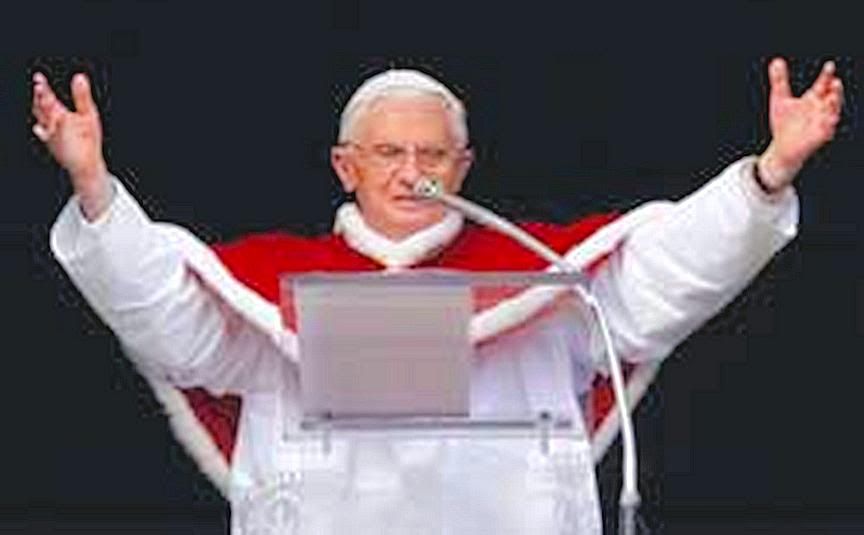
[Modificato da TERESA BENEDETTA 12/12/2011 14:07] |
| |
 11/12/2011 22:08 11/12/2011 22:08 |
|
| | | OFFLINE | | Post: 23.932
Post: 6.502 | Registrato il: 28/08/2005
Registrato il: 20/01/2009 | Administratore | Utente Master | |
|

 Weigel thinks UK bishops are using
Weigel thinks UK bishops are using
wrong strategy in marriage battle
Rome, Italy, Dec 9, 2011 (CNA) - Blessed John Paul II’s biographer, George Weigel, says he disagrees with the decision by the Bishops of England and Wales not to oppose legal recognition for homosexual civil unions as part of their campaign to uphold marriage.
“In my experience in the United States, this notion of civil unions has always been a kind of half way house to so called ‘gay-marriages,’” he told CNA on Dec 7.
Weigel added that while a “humane state is going to make appropriate provisions for human relationships, particularly in moments of distress, … those issues can be dealt with without going down this road of saying there is something in the nature of a stable or unstable homosexual union that the state should honor and lift up.”
Weigel’s comments contrast with remarks made by Archbishop Vincent Nichols, President of the Catholics Bishops Conference of England and Wales, following their bi-annual full assembly in Leeds, Nov. 14-17.
“We would want to emphasize that civil partnerships actually provide a structure in which people of the same sex who want a lifelong relationship, a lifelong partnership can find their place and protection in legal provision,” Archbishop Nichols told journalists at a Nov. 18 press conference in London.
But he also cautioned that “to simply slip from that to marriage is not as simple a step as it might look and indeed it has a lot of ramifications and we would want to say these are categorically two different things.” Respecting “a lifelong partnership is one thing and to call it a marriage, if you like to annex the territory of marriage, is something quite different.”
Archbishop Nichols’s comments drew criticism from some high-profile Catholic commentators in the United Kingdom who pointed out that his statement seemed to contradict the 2003 advice of the Vatican’s Congregation for the Doctrine of the Faith which was then headed by Cardinal Joseph Ratzinger.
In the document “Consideration Regarding Proposals to Give Legal Recognition to Unions between Homosexual Persons,” it states that “in those situations where homosexual unions have been legally recognized or have been given the legal status and rights belonging to marriage, clear and emphatic opposition is a duty.”
In an interview with CNA last week, Archbishop Nichols expanded upon his thinking by explaining that while a civil union “gives a same-sex couple the same rights that a married couple have,” the key distinction between it and marriage is that same-sex unions do not “in law contain a required element of sexual relationships.” [I thought this was a strange, unrealistic and legalistic point brought by Nichols that does not even qualify as an argument in defense of his logic. If 'an lement of sexual relationship' were not present in homosexual unions, then the Catholic Church would have no problem at all, but how many gay couples get together without any thought of sexual relationship with each other? Any Catholic homosexuals who do so are unsung saints, but it is much easier and more pracitcal for a Catholic homosexual who wants to follow his faith to avoid practicing same-sex sex if he/she remains single and celibate, and not part of a 'union']
“Same-sex partnerships are not marriage because they have no root in a sexual relationship which marriage does,” he said, “and that’s the distinction that I think it’s important for us to understand, that marriage is built on the sexual partnership between a man and a woman which is open to children, to their nurture and education.” [But 'gay unions' usually - and perhaps even necessarily - imply a sexual relationship between the partners, which is of course not open to procreation because it is an unnatural act!]
Archbishop Nichols was publicly backed this week by a former high-ranking Vatican official, Cardinal Achille Silvestrini.
The 88-year-old former Prefect of the Congregation for Eastern Churches is quoted in an article entitled “Bufera sul Tamigi” (Storm on the Thames), which was published on the Italian newspaper La Stampa’s website Vatican Insider on Dec 4.
The article claims that Archbishop Nichols is being “forced to publicly defend himself against claims that have been made against him by Catholic groups in the United Kingdom, for his ‘excessive alignment with Rome’ when it comes to family ethics.”
Indeed, the article carries the sub-headline “British Catholic groups accuse the Archbishop of Westminster, Vincent Nichols, of following the Vatican’s guidelines, on homosexuality and civil partnerships, too closely.”
“These unfair accusations made against the President of Catholic Bishops reflect past prejudices and are the consequence of an inveterate mistrust that has its roots in past centuries,” said Cardinal Silvestrini. [I have a problem with this too-outspoken cardinal, who has been openly critical of Benedict XVI in the past, for instance about Summorum Pontificum and about the Regensburg lecture, too, if my memory serves me right. He made his name as a diplomat in John Paul II's Pontificate, where he also served as Prefect of the Apostolic Segnatura, then Prefect of the Congregation for Oriental Churches from 1998-2000, resigning in 2000. In 2003, he turned 85, but although he was no longer an elector, he participated in all the pre-Conclave meetings, and has since been a 'reliable source' for Vatican reporters when they are short of 'news' to report or need a 'headline-worthy' comment.]
The article describes Archbishop Nichols as “a bona fide Ratzingerian” who is “highly esteemed both in the Curia and among the ranks of European bishops.” [I don't know if anyone could call Nichols 'a bona fide Ratzingerian' - his liberal views, in line with the entrenched bishops of England-and-Wales positions, never would have classed him as an 'orthodox' priest or bishop, and his checkered record as Archbishop of Westminster so far proves that. You can't be 'Ratzignerian' and place obstacles in the way of implementing Summorum Pontificum, for example! I can hear Damian Thompson guffawing at Silvestrini's claim.]
Cardinal Silvestrini argues that some in England still seem to suffer from “a legacy of old tensions with the central government of the universal Church, to the point where even its leaders must be careful not to look too ‘papist.’”
The content and tone of the article has created a degree of puzzlement among some inside the Vatican.
“Why has Cardinal Silvestrini decided to speak out on behalf of Archbishop Vincent Nichols?” asked one senior Vatican official, who spoke to CNA on the basis of anonymity.
“After all, the cardinal is an 88-year-old retired Italian cleric who lives in Rome and has no great knowledge of the Church in England, as far as I’m aware. It’s not surprising he seems to have got the story the wrong way round.”
“Anyway, who are these Catholic groups in the U.K. accusing Archbishop Nichols of excessive loyalty to Rome? We’ve certainly never come across any,” he said.
The official spokesman for the Archbishop Nichols told CNA that they did not want to respond to George Weigel’s comments, Cardinal Silvestrini, or the unnamed Vatican official.
The spokesman did acknowledge that “there is a proposal in the U.K. to change the definition of marriage, and the Prime Minister has said that he will back it as he believes equality and commitment is to be applauded and that’s why he’s in favor of same-sex marriage.”
“But we’re simply saying that quality and commitment do not equal marriage – marriage is something specific to do with the union of a man and a woman for the procreation and raising of children.”
Same-sex civil partnerships became legal in the U.K. in 2004, but the issue of same-sex “marriage” has become more prominent in recent months. The Scottish government is currently wrapping up a public consultation on whether to legalize gay “marriage.” A similar consultation in England and Wales will take place next spring.
William Oddie at Catholic Herald, finds Archbishop Nichols's explanation of his statements on same-sex unions more confusing than helpful, and has written at least three commentaries now on the issue:
http://www.catholicherald.co.uk/commentandblogs/2011/11/30/archbishop-nichols
www.catholicherald.co.uk/commentandblogs/2011/12/05/last-week
www.catholicherald.co.uk/commentandblogs/2011/12/09/i-still-think-archbishop...
He is right to be concerned. Nichols's overall orientation seems to be to seek a compromise at all costs, instead of standing up for what the Church teaches. That's not 'Ratzingerian' at all. How is he different then - and has he not learned any lessons - from the Archbishop of Canterbury who has sought to compromise with his liberal flock all this time and has ended up getting women bishops and gay bishops. The current position of the Church of England is that same-sex unions among laymen is permissible but gay clergy are supposed to be celibate! Current UK law does not yet allow homosexual marriage, though it recognizes homosexual unions.
[Modificato da TERESA BENEDETTA 11/12/2011 22:29] |
| |
 12/12/2011 14:50 12/12/2011 14:50 |
|
| | | OFFLINE | | Post: 23.933
Post: 6.503 | Registrato il: 28/08/2005
Registrato il: 20/01/2009 | Administratore | Utente Master | |
|


 Monday, December 12, Third Week of Advent
Monday, December 12, Third Week of Advent
FEAST OF NUESTRA SENORA DE GUADALUPE, 'Queen of Mexico', Patroness of the Americas
 Images from left: Apparition to Juan Diego; the miraculous image on the tilma; etching of Juan and the cloak; 18th-cent painting "God painting the image of Guadalupe'; battle standard of General Miguel de Hidalgo in the Mexican War for Independence; and Juan Diego's tilma with the image, venerated in the Basilica of Guadalupe.
December 12 commemorates the day when the image now venerated as Our Lady of Guadalupe appeared miraculously on the cloak of the man who is now St. Juan Diego, remembered by the Church on December 9, the date of the Lady's first apparition to him on Tepeyac hill (part of what is now Mexico City), bidding him to tell the bishop to build a church in her honor. The skeptical bishop asked for a sign, and Juan Diego returned to Tepeyac to intercede for a sick uncle and convey the bishop's reaction. The Virgin told him his uncle would recover and asked him to gather roses on the hilltop to bring to the bishop. Juan wrapped the miraculous roses in his cloak and when he opened it for the bishop, the cloak itself was found to carry the image of the Lady who had appeared to him. The initial surge of popular devotion and conversions to Catholicism inspired by the miracles, coinciding with the early years of the Protestant Reformation in Europe, grew to be the most popular devotion in all Latin America and perhaps the world. Millions of faithful visit the Shrine of Guadalupe on the two days of spiritual celebrations Dec. 11-12 dedicated to Our Lady. This shrine has become the most visited Marian shrine in the world.
Images from left: Apparition to Juan Diego; the miraculous image on the tilma; etching of Juan and the cloak; 18th-cent painting "God painting the image of Guadalupe'; battle standard of General Miguel de Hidalgo in the Mexican War for Independence; and Juan Diego's tilma with the image, venerated in the Basilica of Guadalupe.
December 12 commemorates the day when the image now venerated as Our Lady of Guadalupe appeared miraculously on the cloak of the man who is now St. Juan Diego, remembered by the Church on December 9, the date of the Lady's first apparition to him on Tepeyac hill (part of what is now Mexico City), bidding him to tell the bishop to build a church in her honor. The skeptical bishop asked for a sign, and Juan Diego returned to Tepeyac to intercede for a sick uncle and convey the bishop's reaction. The Virgin told him his uncle would recover and asked him to gather roses on the hilltop to bring to the bishop. Juan wrapped the miraculous roses in his cloak and when he opened it for the bishop, the cloak itself was found to carry the image of the Lady who had appeared to him. The initial surge of popular devotion and conversions to Catholicism inspired by the miracles, coinciding with the early years of the Protestant Reformation in Europe, grew to be the most popular devotion in all Latin America and perhaps the world. Millions of faithful visit the Shrine of Guadalupe on the two days of spiritual celebrations Dec. 11-12 dedicated to Our Lady. This shrine has become the most visited Marian shrine in the world.
Readings for today's Mass:
www.usccb.org/nab/readings/121210.shtml
AT THE VATICAN TODAY
The Holy Father met with
- H.E. Serzh Sargsyan, President of the Republic of Armenia, and his delegation
- Seven bishops of New Zealand on ad-limina visit
- Lord Jonathan Sacks, Chief Rabbi of the United Jewish Communities of the British Commonwealth
This afternoon, the Holy Father will preside at a concelebration of the Eucharist at St. Peter's Basilica
for the peoples of Latin America on the Feast of Our Lady of Guadalupe and on the occasion of the
bicentenary of the declarations of independence by the Latin American nations between 1804-1824.
 POPE'S CONDOLENCES ON THE DEATH
POPE'S CONDOLENCES ON THE DEATH
OF CARDINAL FOLEY

Here is the text of the Holy Father's telegram sent yesterday to the Archbishop of Philadelphia upon the death of Cardinal Foley, who died of leukemia at age 76. He was a native of Philadelphia.
TO THE MOST REVEREND CHARLES CHAPUT
ARCHBISHOP OF PHILADELPHIA
HAVING LEARNED WITH SADNESS OF THE DEATH OF CARDINAL JOHN PATRICK FOLEY, GRAND MASTER EMERITUS OF THE EQUESTRIAN ORDER OF THE HOLY SEPULCHRE OF JERUSALEM, I OFFER YOU MY HEARTFELT CONDOLENCES.
AS I RECALL WITH GRATITUDE THE LATE CARDINAL’S YEARS OF PRIESTLY MINISTRY IN HIS BELOVED ARCHDIOCESE OF PHILADEPHIA, HIS DISTINGUISHED SERVICE TO THE HOLY SEE AS PRESIDENT OF THE PONTIFICAL COUNCIL FOR SOCIAL COMMUNICATIONS, AND MOST RECENTLY HIS LABORS ON BEHALF OF THE CHRISTIAN COMMUNITIES OF THE HOLY LAND, I WILLINGLY JOIN YOU IN COMMENDING HIS NOBLE SOUL TO GOD, THE FATHER OF ALL MERCIES.
I ALSO PRAY THAT HIS LIFELONG COMMITMENT TO THE CHURCH’S PRESENCE IN THE MEDIA WILL INSPIRE OTHERS TO TAKE UP THIS APOSTOLATE SO ESSENTIAL TO THE PROCLAMATION OF THE GOSPEL AND THE PROGRESS OF THE NEW EVANGELIZATION.
TO ALL WHO MOURN CARDINAL FOLEY IN THE HOPE OF THE RESURRECTION, I CORDIALLY IMPART MY APOSTOLIC BLESSING AS A PLEDGE OF CONSOLATION AND PEACE IN OUR LORD JESUS CHRIST.
BENEDICTUS PP. XVI
  |
| |
 12/12/2011 16:24 12/12/2011 16:24 |
|
| | | OFFLINE | | Post: 23.936
Post: 6.506 | Registrato il: 28/08/2005
Registrato il: 20/01/2009 | Administratore | Utente Master | |
|
 US Catholic editors vote Roman Missal translation
US Catholic editors vote Roman Missal translation
as the top news story of 2011, and once again,
Pope Benedict as the top newsmaker
By Nancy Frazier O'Brien

WASHINGTON, Dec. 9 (CNS) -- The introduction of the English translation of the Roman Missal topped the religious news stories of 2011, and Pope Benedict XVI was again the top newsmaker, according to the annual poll conducted by Catholic News Service.
The continued effect of the global economic downturn was second among the 30 news stories on the ballot, the democracy movement in the Middle East dubbed the Arab spring took third place.
Among the 24 newsmakers on the ballot, Archbishop Timothy M. Dolan of New York, president of the U.S. Conference of Catholic Bishops, was second, and U.S. President Barack Obama was third.
The poll was the 50th annual survey conducted by CNS. This year's ballots were distributed Dec. 2 and the deadline for returns was Dec. 8.
When the editors' poll was first conducted in 1962, the overwhelming choice for top story was the opening of the Second Vatican Council. Last year, editors chose the recovery and rebuilding effort that followed the devastating January earthquake in Haiti as the top religious story of the year and Pope Benedict as the top newsmaker.
Editors were asked to vote for the top 10 news stories from a list of 30, and the top five newsmakers from a list of 24. Votes were weighted by the rankings editors gave -- 10 points for a first-place vote, nine points for second, etc., and five points for top newsmaker, four for second, etc.
With 29 editors and CNS staff members submitting ballots, the maximum points a story could have received was 290. The most a newsmaker could receive on the five-point scale was 145.
Rounding out the top five for religious news stories were the Irish Church's sex abuse scandal and the issue of religious freedom.
Pope Benedict, who has been the top religious newsmaker in the CNS poll every year since 2006, took first place this year for his travels to Croatia, Benin, Germany and Spain; his declaration of the upcoming Year of Faith; and his meetings with U.S. bishops, which were to continue into 2012.
Among newsmakers, Blessed John Paul II, who was beatified in May, and Fordham University theologian Sister Elizabeth Johnson, whose 2007 book "Quest for the Living God" was declared "seriously inadequate as a presentation of the Catholic understanding of God" by the bishops' Committee on Doctrine, were fourth and fifth, respectively.
Here are the choices for top 10 stories and top five newsmakers of 2011, followed by points received in the weighted ballot count and, in parentheses, the number of first-place votes received.
STORIES
1. Roman Missal, 200 (9)
2. Economy, 189 (7)
3. Arab spring, 126 (4)
4. Health care, 120
5. Irish church sex abuse scandal, 111 (2)
6. Religious freedom, 85 (3)
7. World Youth Day, 84
8 (tie). Sex abuse, 74 (1)
8 (tie). Wars in Iraq and Afghanistan, 74
10. Natural disasters, 67 (1)
Two first-place votes also went to the anniversary of the Sept. 11, 2001, terrorist attacks.
|
| |
 12/12/2011 20:00 12/12/2011 20:00 |
|
| | | OFFLINE | | Post: 23.935
Post: 6.505 | Registrato il: 28/08/2005
Registrato il: 20/01/2009 | Administratore | Utente Master | |
|
 A rabbi speaks to the Pope
A rabbi speaks to the Pope
by Angela Ambrogetti
Translated from

December 12, 2011
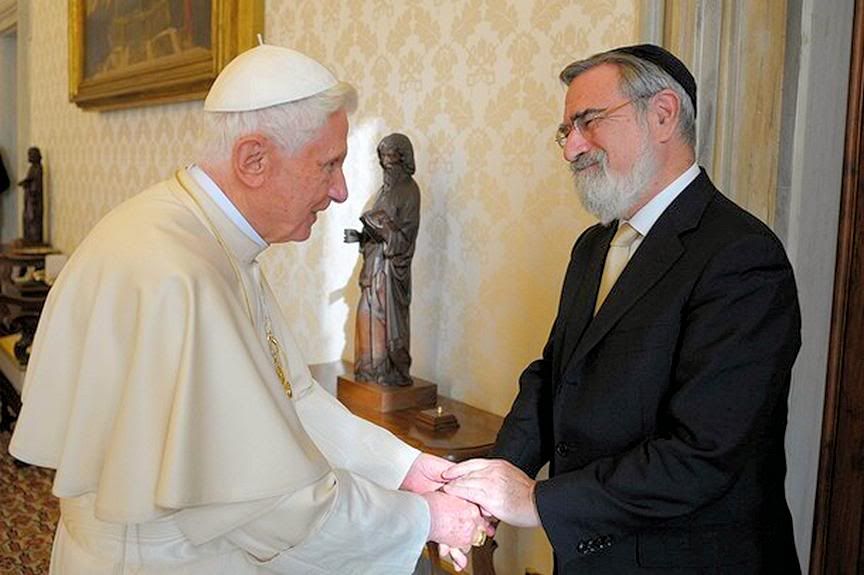 Rabbi Sacks had a private audience today with the Holy Father.
Rabbi Sacks had a private audience today with the Holy Father.
What do a Pope and a rabbi have in common? A lot, if the Pope is Benedict XVI and the rabbi is Jonathan Sacks, Chief Rabbi of the United Jewish Communities of the British Commonwealth.
Just reread what they have said and done in recent years to understand that their meeting today is a private meeting between two religious leaders who strongly feel the need to bring back and religion and faith to the center of public life. And to do so, they have used similar arguments.
One can quote them and discover that their differences are minimal.
"We are experiencing a growing indifference to religion in a society which considers the problem of truth as an obstacle to making decisions, and rather gives priority to militaristic considerations. Religion is one of the foundations for a successful social life", Benedict XVI said in Germany during his meeting with German President Christian Wulff last September.
The Pope has made his Pontificate a continuous invitation not to exclude religion from public life, and a continuous appeal against indifference to God. In a meditation to the Synodal Assembly for the Middle East, he spoke clearly of false gods, among which he included anonymous financial capitalists.
What does Rabbi Sacks think? "The supreme irony of our current situation," he said in a recent lecture, "is that we are experiencing it in a secular era not because of a lack of faith, but on the contrary, because of too much faith in the wrong things. Faith in the market as a self-correcting system. Faith in having safeguarded against every risk, as if one could eliminate uncertainty by paying other than by taking personal responsibility for your own uncertainty. Faith in authorities to make laws which can liberate the world from sin. Faith in the combination of the market and technology to generate unending economic growth."
Is faith the response to the times we are living? "We are where we are," Rabbi Sacks continued, "and we can only look ahead. The question for many of us should certainly be: what is the best investment we can make for the near future?"
"It is not stocks. These can crash. It is not acquiring houses - real estate has values that can collapse. Not works of art, for who knows what artistic taste will be in 20 or 30 years? The best investment today is in spiritual goods: love, trust, friendship and forgiveness, prayer and liturgy, the life of the soul.
"The time has come to invest in the most profound sources of happiness: matrimony, the family, the domestic hearth. Love between husband and wife, parent and child.
"It is time to invest in the community and in a support network for the persons with whom we share our prayers, memories and ideals. The community is where our joy is redoubled and our sadness alleviated because we share them with others".
And yet, since the Enlightenment, religious indifference has been invoked as a sign of intellectual maturity for the modern man, or as the condition to realize his complete liberation. It has been said openly that man can live etsi Deus non daretur - as if there were no God.
The challenge launched by Benedict XVI is to live as if God exists. A challenge that does not just involve ethics but also moral action. And which also concerns something more practical, like the crisis we are undergoing.
"The economy and the market," said the Pope speaking to the Confederation of Italian cooperatives recently, "can never be separated from solidarity".
Read Rabbi Sacks about this: "Social capital is living and growing, and it is found in churches and synagogues. Religion functions, whether one believes it or not".
And thus a rabbi and a Pope speak in terms that are indistinguishable. They start from a common point, which is faith. Upon which they construct dialog. In order to start from God to construct a new civilization.
Lord Sacks talks about
his meeting with the Pope
and relevant concerns

December 12, 2011
Lord Jonathan Sacks, Chief Rabbi of the United Hebrew Congregation of the Commonwealth, met with Pope Benedict on Monday to discuss interfaith relations and their common concern for the decline of spiritual values within European culture.
Rabbi Sacks, who has been spiritual leader of the mainstream Orthodox Jewish communities in the UK, Australia and Hong Kong since 1991, said faith, in the modern world, has no political power but it does have a great deal of influence - especially among those who question the kind of value system they want for their children.
Asked about a rise in anti-Semitism in Europe, the Rabbi stressed that Jews cannot fight anti-semitism alone, "the victim cannot cure the crime, the hated cannot cure the hate." He said he will fight for the right of Christians anywhere in the world to live their faith without fear, "but I need them to fight for the right of my people to live their faith without fear."
Asked if the current political stalemate in between Israelis and Palestinians could be behind this resurgent anti-Semitism, Sacks said "we must not allow ourselves to import a message of conflict from the Middle East to Europe.
Here is the transcript of Philippa Hitchen's full interview with Rabbi Sacks:
I’d like to ask you about your conversation with the Pope this morning – this was your 2nd meeting after you welcomed him to the interfaith meeting in Twickenham last September?
I had been asked to welcome him on behalf of the non-Christian faiths in Britain and it was actually a very moving encounter, I think we felt that something had happened at the moment and it was, you know, a sharing of faith across the boundaries and it was very moving. The Pope at the time told me he wanted to deepen that relationship so I felt this visit was a way of moving that a step further.
What can you tell us about your meeting this morning?
We are very concerned obviously with the soul of Europe, I mean Europe was built on Judeo-Christian foundations, even the market was built on Judeo-Christian foundations, and scholars are fascinated as to how it was that China that had been way in advance of the West until the fifteenth century, invented things long before the West did, failed to develop a market economy or a democratic society or an industrial revolution. And most scholars take the view that the difference between the West and China was that Judeo-Christian heritage.
Many religious leaders share this concern about Europe’s consumer culture and the erosion of our Judeo-Christian heritage – do you see this as a passing phase or will people of faith have to continue fighting for their right to be part of the national conversation?
In the Jewish community we do not feel marginalized, we find more and more people coming to synagogue, more and more parents wanting to send their children to Jewish schools and the impression is growing that there is something lacking in the wider secular culture when all that matters is “what I am, what I spend, what I buy, what I earn” instead of “what I am” and I think parents are beginning to say we “don’t want that for our children, we want our children to learn about a much older and more spacious heritage”.
You speak regularly of the connections between this loss of spiritual values and the current economic crisis – you say it’s no coincidence that, in Britain, shopping on Sunday and the deregulation of the financial markets occurred at about the same time – yet despite these clear connections, government and financial leaders seem increasingly unwilling to listen to people of faith?
I think faith in the modern world, and I wouldn’t have it any other way, has no power at all. But it does have a great deal of influence. Now politics is about power. So politicians and religious figures inhabit different universes, although many politicians have strong religious faith, but it is difficult to know exactly how do you create a partnership between the two, which is one reason I came to see the Pope, because I think if Jewish and Christian voices are heard, along parallel lines, then they should not underestimate the influence they have.
And of course that was very clear in terms of the visit of the Pope to Britain just over a year ago. Everyone was amazed that the interest was so acute and so widespread and everyone saw a gentle, very spiritual, very holy person and that had huge impact. So yes, it is true that religion doesn’t play a part in the political arena but I’m glad about that. We should not aspire to political power.
But we are talking to people, especially when they’re thinking “what kind of answer do I want to give to the meaning of life and what kind of value system do I want for my children”.
Were you able to discuss the current state of Jewish-Christian relations with the Pope today?
Well the Pope himself raised it and continually wanted to know how was that state of relationship in Britain, where in fact of course it’s as good as you’ll find anywhere in the world.
He also wanted to know, just to reaffirm, his belief in our shared belief in the god of Abraham, our shared commitment to the Ten Commandments and our shared belief that society must have a spiritual dimension.
You’ve written a lot about interfaith relations, notably in your book ‘The Dignity of Difference’, yet in trying to reach out to other faiths you’ve been accused of heresy against traditional Orthodox teachings – what do you say to your accusers about the truth to be found in other religions?
Well, what is absolutely clear from the Bible is that you have some very godly individuals who are not part of the Abrahamic covenant. Famously you have Melchizedek, the contemporary of Abraham who is called by the Bible “the priest of the most high God”, you have Moses’s father-in-law Jethro, a Midianite priest, and, my favorite of all, which is Pharaoh’s daughter who, at great risk to herself, saves the young Moses. Without a Pharaoh’s daughter there wouldn’t be a Moses, so the Bible is not partisan at all in the way it sees righteousness and godliness. It sees it in all sorts of places.
Jewish attitudes towards the Catholic Church also seem to be divided with some applauding Benedict and John Paul before him for implementing the spirit of Nostra Aetate – others still seem to see the Church only in terms of the possible beatification of Pius XII and a perceived failure to apologise for not speaking out enough against the Holocaust?
My view is axiomatic and fundamental. The God of love and forgiveness created humanity in love and forgiveness, and asks of us to love and forgive others. And that is the attitude I bring to Jewish-Christian relations. And I hope it’s the attitude Christians bring to that same relationship.
We recognize the extraordinary about-turn that occurred in the Catholic Church at really the inspiration and depth of compassion of Pope John XXIII, which set in motion the process that culminated in Vatican II, the result of which is that Jews and Catholics, having been estranged for many centuries, now meet again today as cherished and respected friends. You would find it hard to find a transition like that in the whole of European history. So I see the hope vastly outweighing the anxieties, and the good news vastly exceeding the bad.
Divisions between Liberal and Orthodox, reformists and traditionalists, in Judaism as well as within the Christian Churches, sometimes seem as damaging as the tensions between the different faiths – do you see an increasing polarisation within the Jewish world?
No, in Britain we have actually solved the problem, and we had to solve the problem because we cannot make peace with the world if we cannot make peace among ourselves. And when relationships got a little tense, some fifteen years ago, I sat down and said to myself “we have to develop fundamental principals of a relationship that has integrity.”
In the end I formulated two principals – and they work. Number one: on all matters that affect us as Jews, regardless of our religious denomination we will work together regardless of our religious denomination. On all matters that touch on our differences, we will agree to differ, but with respect.
The result of which is that orthodox and non-orthodox Jews in Britain are closer together today than they were at any other time, Of course, a famous Jew, Abba Eban, once said “we’re the people who can’t take yes for an answer”.
So there are some people who have not quite caught up with reality, but the fact is that for the first time in history, I, as an orthodox chief rabbi, sit together with reform and liberal rabbis as joint presidents of the Council of Christians and Jews, and on inter-faith matters, as in all matters that touch on our common fate, we work together.
Do you see anti-semitism as on the rise in Europe today?
I am mortified by the return of anti-Semitism to Europe within living memory of the Holocaust. We had believed “never again” but it has returned. It is extremely worrying and disturbing and, as I said very candidly at a EU conference convened by Romano Prodi already eight years ago in the EU Centre in Brussels, I said: Jews cannot fight anti-Semitism alone. The victim cannot cure the crime. The hated cannot cure the hate.
I will fight for the right of Christians anywhere in the world to live their faith without fear, but I need them to fight for my right, the right of my people, to live their faith without fear. The result is that in Britain we have become perhaps the first country where the fight against anti-Semitism is led by non-Jews and that is very moving and very significant.
So it’s a coalition of leaders that is speaking out today?
It is a coalition of parliamentarians led by the Prime Ministers - Tony Blair, Gordon Brown, David Cameron, have all got up in public and said quite simply “I promise that Jews will never have to fight anti-Semitism alone”. They’ve accepted that responsibility, and it’s very important.
At the same time, I believe in the other side of the bargain as well. So on Friday, just a few days ago, I spoke in the House of Lords about my concern and my solidarity with Christians in the Middle East who are suffering persecution and great uncertainty. There’s been a mass exodus of Christians from Iraq, as many as 100,000 Christians – Coptic Christians, have left Egypt, we have the situation of Christians in Syria entirely in doubt and it is important that Jews, the British Jews, the European Jewish community stand in solidarity with Christians where they face persecution.
How much do you see the ongoing Israeli-Palestinian conflict at the heart of these other problems in the Middle East and even behind the rise in anti-Semitism?
I refuse to accept that for one simple reason, and I tell this to my Muslim friends and I tell this to my friends of all faiths: we must be sending a message of coexistence from Europe to the Middle East. We must not allow ourselves to import a message of conflict from the Middle East to Europe.
If the already difficult situation between Israelis and Palestinians is difficult enough in itself, that the whole of Europe should be made a proxy battle field for that conflict will not bring peace but on the contrary will devastate the outstandingly good relations that exist between the faiths in Europe.
The political process seems to be in stalemate there – do you see any signs of hope for an end to the conflict?
I have made a great distinction in all my writings between optimism and hope. And knowing history as we do, no Jew can be an optimist. But no Jew worthy of the name ever lost hope.
And when it comes to the peace in the Middle East between Israelis and Palestinians, I refuse to give up hope. There is still a genuine majority on both sides in favor of a two state solution. And although the political process may have reached a momentary stalemate, as it seems to have done, nonetheless the underlying attitudes on both sides embolden my hope to believe that a peaceful settlement is possible and will be reached.
You’ve said you’ll be stepping down from your job in 2013 – what do your see as your most significant success over the years, what would you most like to be remembered for?
We tried to do three things and I think we succeeded. First, I made a pledge that we would increase the level and depth of Jewish education. And we have seen in twenty years the percentage of Jewish children at Jewish day-schools go up from around 25-30% to nearly 70%. So we’ve built more Jewish day-schools in the last twenty years than at any previous time in our over 350 year history.
The second was I wanted to be a catalyst for creativity. I note that the Pope calls the Catholic Church today ‘a creative minority’. Now to be a Jew is to be a member of a creative minority and we’ve seen in the last 20 years an explosion in cultural and other forms of Jewish expression, some religious, some not, but all vivid, vital and full of energy and we have a much more energetic community than we had before.
And finally, I took it on myself, as far as I could by just doing it, to allow the Jewish voice to be heard in the public square. I believe that Jews should not simply keep to themselves, we should seek to be a voice in the conversation of humankind, in fact I define Judaism as the voice of hope in the conversation of humankind.
The British public has been quite extraordinarily warm in welcoming that sharing of Jewish wisdom and I believe we are all enriched when the great faiths share their wisdom with those of any faiths and those of none.
[Modificato da TERESA BENEDETTA 13/12/2011 15:22] |
| |
 12/12/2011 22:02 12/12/2011 22:02 |
|
| | | OFFLINE | | Post: 23.936
Post: 6.506 | Registrato il: 28/08/2005
Registrato il: 20/01/2009 | Administratore | Utente Master | |
|

 Pope meets Armenian President
Pope meets Armenian President

December 12, 2011
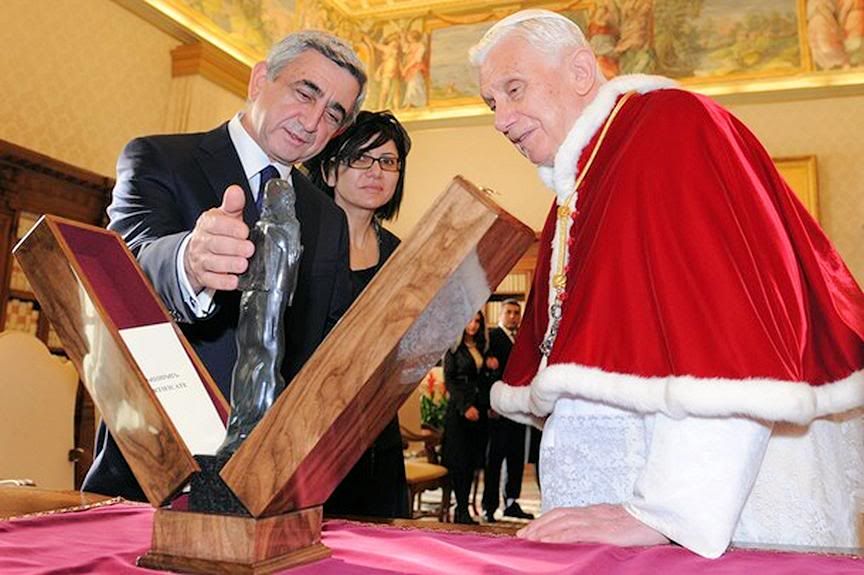
This morning the Holy Father Benedict XVI received in audience Serzh Sargsyan, president of the Republic of Armenia. The President, accompanied by Edward Nalbadian, foreign minister, then went on to meet with Cardinal Secretary of State Tarcisio Bertone S.D.B. who was accompanied by Msgr. Ettore Balestrero, Undersecretary for Relations with States.
In the course of the cordial discussions, and having expressed great pleasure at the good relations that exist between the Holy See and the Republic of Armenia, the parties exchanged views on the role that the Armenian Apostolic Church and the Catholic Church play in society, and the contribution they both make to the common good.
Attention also turned to the importance of the country's Christian heritage, and of the commitment to educating the new generations in fundamental values.
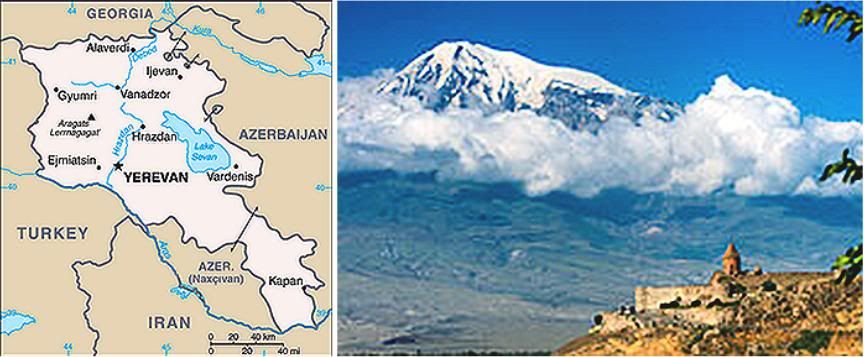 Armenia, a former Soviet Republic, is in the Caucasus Mountains, and claims Mt. Ararat, legendary resting place of Noah's Ark, as its most prominent landmark, although the mountain is within Turkey, about 12 miles from the Armenian border. A 7th century monastery is at the Armenian foot of the monuntain.
Armenia, a former Soviet Republic, is in the Caucasus Mountains, and claims Mt. Ararat, legendary resting place of Noah's Ark, as its most prominent landmark, although the mountain is within Turkey, about 12 miles from the Armenian border. A 7th century monastery is at the Armenian foot of the monuntain.
 Left, Government House in Yerevan; center,the 9th-century Etchmiadzin Cathedral in Yerevan, the oldest state-built cathedral in the world; and right, St. Mashrop Mashtots, who invented the Armenian alphabet in 405.
Left, Government House in Yerevan; center,the 9th-century Etchmiadzin Cathedral in Yerevan, the oldest state-built cathedral in the world; and right, St. Mashrop Mashtots, who invented the Armenian alphabet in 405.
Armenia today has about 3 million population in a mountainous country about the size of Maryland state. It is 95% Christian, most of them Orthodox. The Apostles Bartholomew and Jude Thaddeus preached Christianity in Armenia in AD 40-50, and therefore the Armenian Church is called the Armenian Apostolic church. Armenia was the first state ever to officially adopt Christianity as the state religion in 301, before it became the sTate religion of the Roman Empire.
[Modificato da TERESA BENEDETTA 12/12/2011 22:04] |
| |
 13/12/2011 00:40 13/12/2011 00:40 |
|
| | | OFFLINE | | Post: 23.937
Post: 6.507 | Registrato il: 28/08/2005
Registrato il: 20/01/2009 | Administratore | Utente Master | |
|
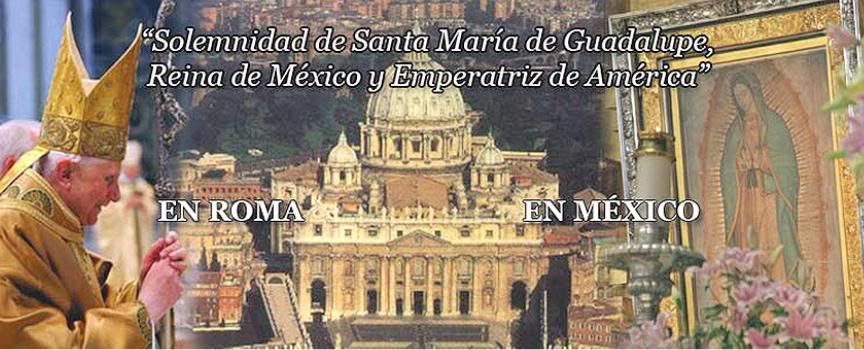
 At Papal Mass for Latin America,
At Papal Mass for Latin America,
Benedict XVI confirms trip to
Mexico and Cuba before Easter

December 12, 2011
Pope Benedict XVI presided at a solemn Mass in Saint Peter's Basilica Monday evening to commemorate the 200th anniversary of the independence of the countries of Latin America.
The celebration occurred on the feast of Our Lady of Guadalupe, honoured by the Catholic Church as Patroness of the Americas, Empress of Latin America, and Protectress of Unborn Children.
In the course of his homily, the Holy Father announced his intention to embark on an Apostolic Voyage to Mexico and Cuba sometime before Easter.
The Pope said that he desired to make the trip in order to "preach the Word of Christ" and to confirm anew that now is the time to proclaim the Gospel with true faith, living hope, and ardent charity.
As expected, the confirmation of the trip to Latin America overshadowed all other papal events today in MSM news reports...

 Pope confirms trip to Cuba and Mexico
Pope confirms trip to Cuba and Mexico
'to encourage justice, love, hope'

VATICAN CITY, Dec. 12 (AP) — Pope Benedict XVI plans to travel to Cuba and Mexico before Easter next year, saying he hopes his visit will strengthen the faith and encourage Catholics there to seek justice and hope.
Benedict confirmed his travel plans Monday during a Mass in St. Peter’s Basilica honoring Mexico’s patron saint, the Virgin of Guadalupe.
Pope Benedict XVI says he hopes to travel to Cuba and Mexico sometime before Easter and wants to strengthen the faith and encourage Catholics there to seek love, justice and hope.
During the Mass honoring Mexico’s patron saint, the Virgin of Guadalupe, in his homily, the 84-year-old Pope said he hoped his trip would help build a society “rooted in the development of the common good, the triumph of love and the spread of justice.”
The late Pope John Paul II made historic trips to both Cuba and Mexico. He became the first Pope to visit Mexico when he landed in 1979 on his first foreign trip and he made a groundbreaking tour of communist Cuba in 1998.
Benedict has visited Latin America once before — Brazil in 2007 — but the 84-year-old has focused his travel mostly in Europe, to both spare him from long trips and to focus his efforts o n a continent where Christianity has fallen by the wayside.[Look for this near-offensive 'standard codicil' to appear unfailingly in all AP reports about this trip. It first appeared last week in the very same words, and is bad journalistic practice because it misrepresents the Pope as though he did not pay enough attention to other parts of the world!]
His decision to return to Latin America shows the Vatican’s concern about cementing the faith in a region that claims about half of the world’s Catholics, but where evangelical Pentecostal movements are making major inroads.
In his homily, Benedict said it was his responsibility as Pope to help confirm the faith in such an important Catholic stronghold. He said he hoped the region would continue to create new missionaries who would help build a society “rooted in the development of the common good, the triumph of love and the spread of justice.”
“With these wishes, and supported by the help of divine providence, I intend to make an apostolic trip before Easter to Mexico and Cuba,” he said as applause erupted in St. Peter’s Basilica.
He said it was a “precious time to evangelize with a solid faith, a lively hope and ardent charity.”
Mexico is second only to Brazil as the world’s top Catholic nation. The church in Cuba, meanwhile, has taken on a prominent role recently in negotiating the release of dozens of jailed dissidents.
Although Cuba under Fidel Castro never severed ties with the Vatican, relations between the communist government and the church were strained for decades. Tensions eased in the early 1990s, however, when the government removed references to atheism in the constitution and allowed believers of all faiths to join the Communist Party.
John Paul’s 1998 visit to Cuba further improved relations, and top Vatican cardinals have made frequent visits to the island since then.
Next year Cuban Catholics will celebrate the 400th anniversary of the discovery of the image of the Virgin of Charity of Cobre, Cuba’s patron saint.
In Havana, Catholics were joyful at the news.
“His visit to our country is a cause for pride and satisfaction, and it is an important thing for the revolution,” said 47-year-old Ramon Parte, who was paying homage Monday to an image of the Virgin of Charity that was on a nationwide tour.

[Modificato da TERESA BENEDETTA 13/12/2011 04:54] |
| |
 13/12/2011 04:51 13/12/2011 04:51 |
|
| | | OFFLINE | | Post: 23.938
Post: 6.508 | Registrato il: 28/08/2005
Registrato il: 20/01/2009 | Administratore | Utente Master | |
|

 I've decided to separate the coverage of the Mass from the announcement of the Papal trip to Latin America...
First papal Mass at St. Peter's
I've decided to separate the coverage of the Mass from the announcement of the Papal trip to Latin America...
First papal Mass at St. Peter's
to honor Our Lady of Guadalupe
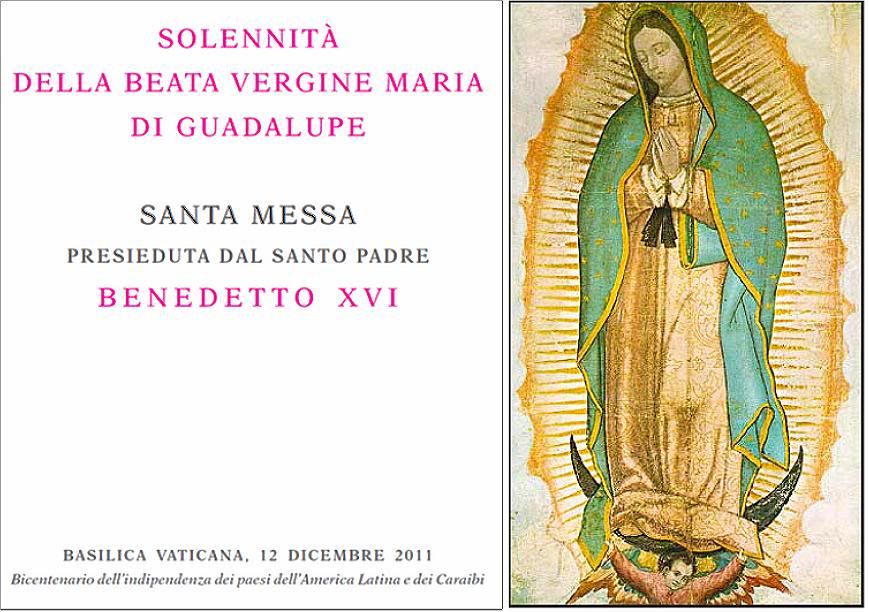
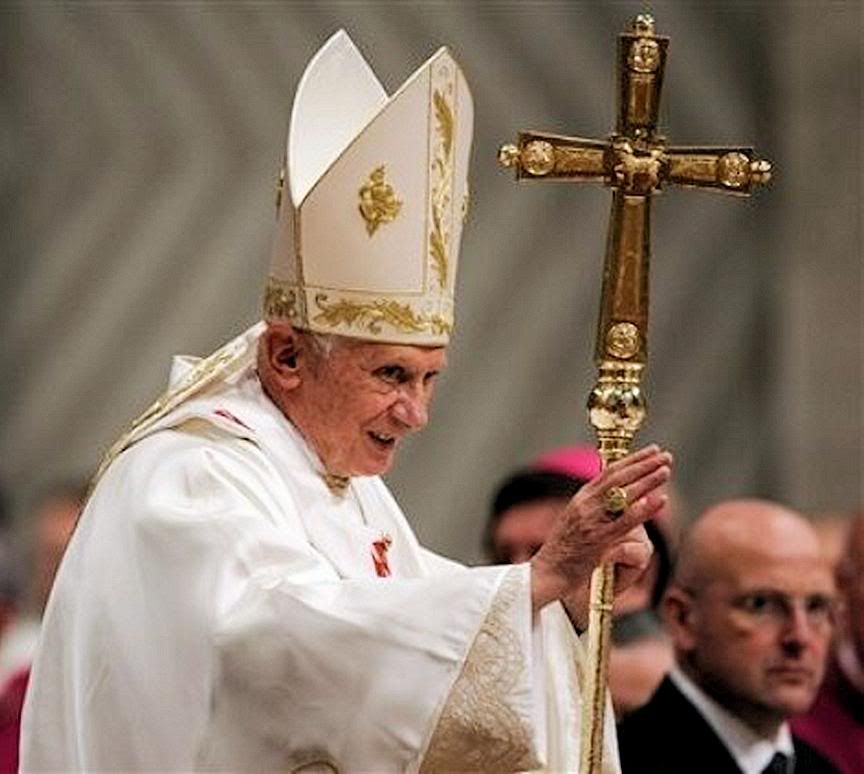


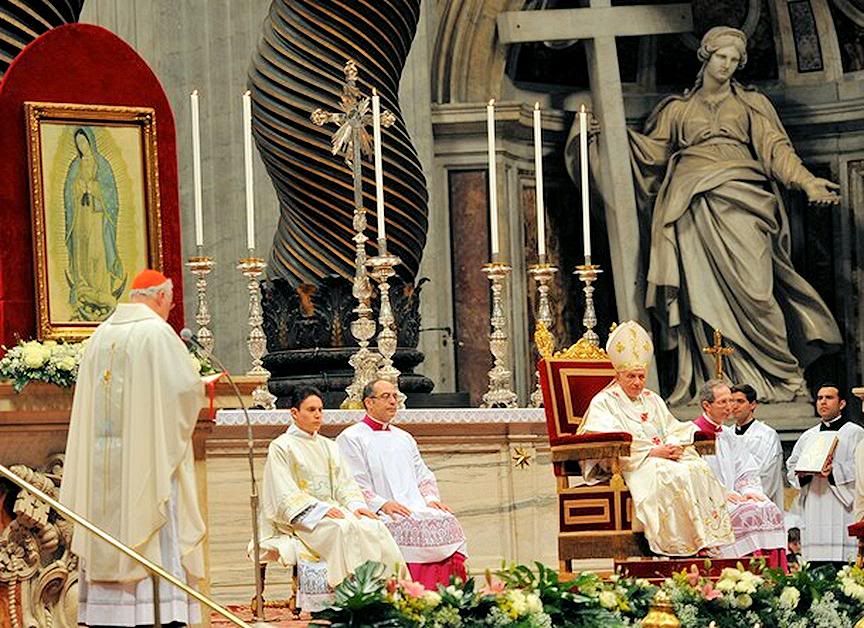
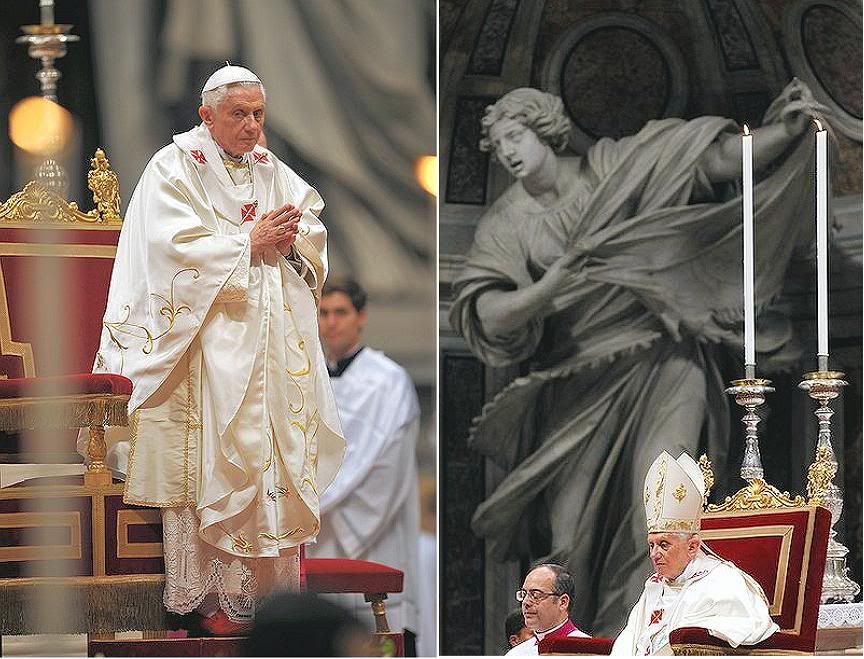
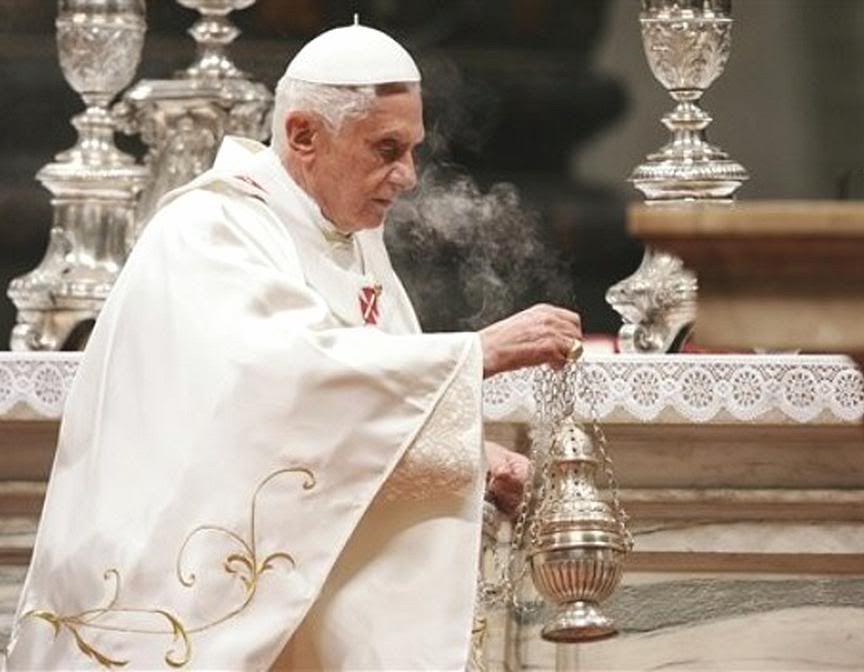
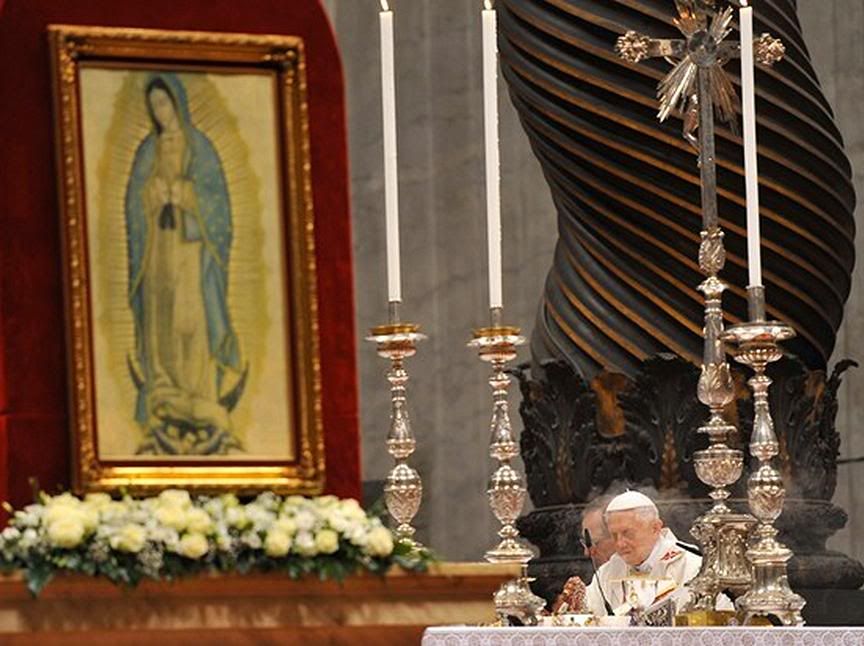
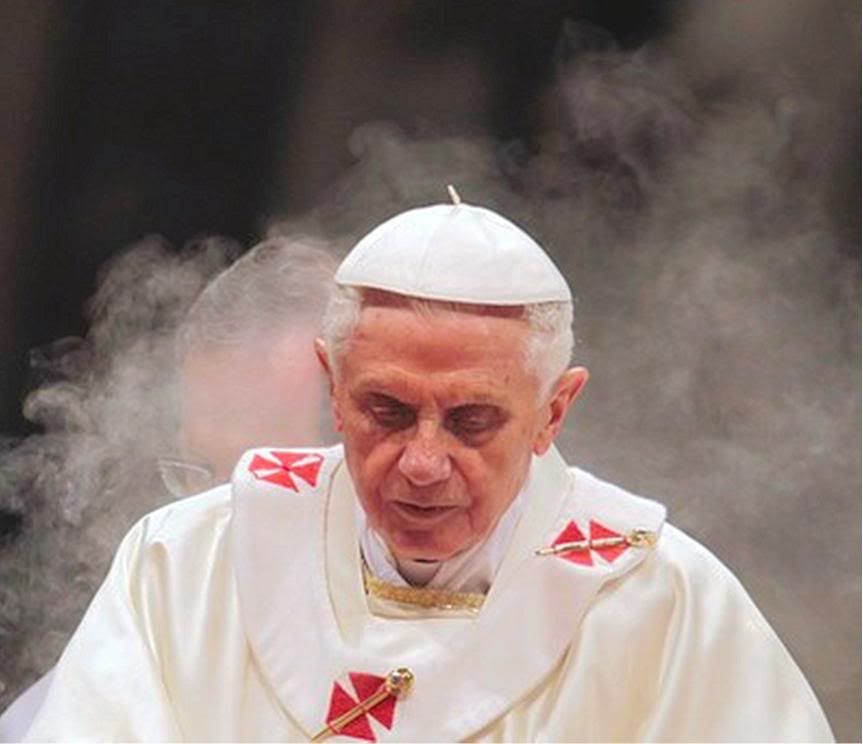
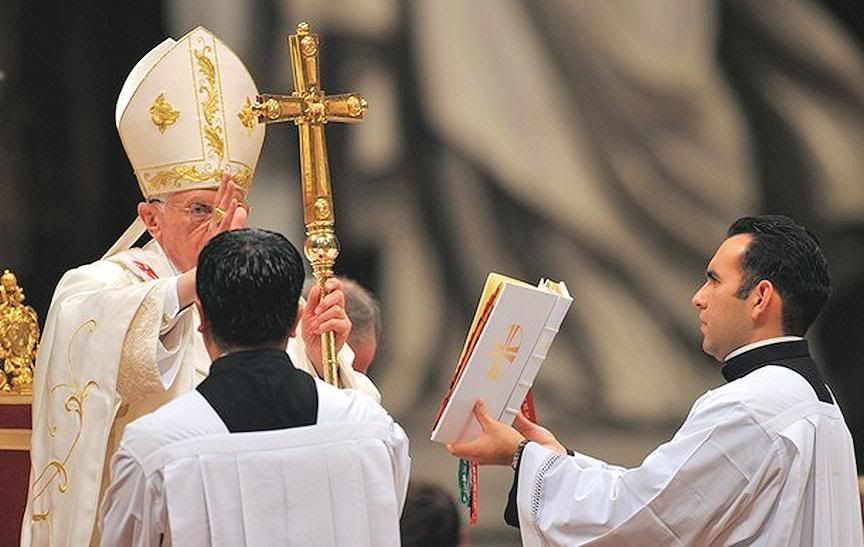
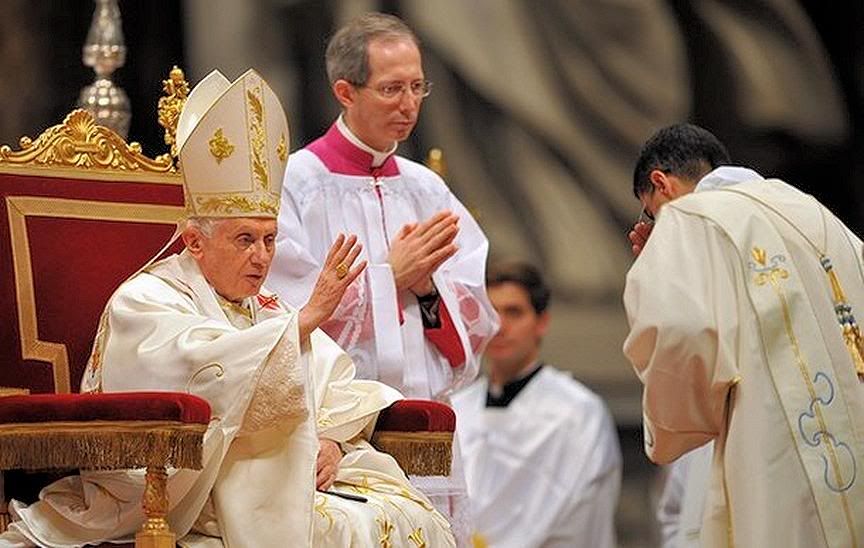 Here is a full translation of the Holy Father's homily, which was delivered in Spanish, except for two paragraphs in Portuguese:
Here is a full translation of the Holy Father's homily, which was delivered in Spanish, except for two paragraphs in Portuguese:
Dear brothers and sisters:
"The earth has given its fruit" (Ps 66,7). In this image of the Psalm that we just heard, in which all peoples and nations are invited to rise in jubilee to the Lord who saves us, the Fathers of the Church recognized the Virgin Mary and Christ her son: "The earth is Mary, who comes from our land, our lineage, from this soil, from the mud of Adam... The earth has born fruit: first, it produced a flower... Later, this flower became fruit so we could eat it, so we could eat its flesh. Do you want to know what that fruit is? It is the Virgin who comes from the virgin; the Lord, from the slave; God, from man; the Son, from the Mother; the fruit of the land" (St Hieronymus, Brevarium in Psalm,4-6).
Today, we, too, exulting the fruit of this land, say: "May the peoples praise you, God" (Ps 66,4-6). We proclaim the gift of the redemption achieved by Christ, and in Christ, we recognize all of God's power and divine majesty.
Inspired by these sentiments, I greet with fraternal affection the cardinals and bishops who are with us, the diplomatic representatives present, the priests and religious, as well as the lay faithful congregated in this Basilica of St. Peter's to celebrate with joy the Solemnity of Our Lady of Guadalupe, Mother and Star of America's Evangelization.
I also think of those who are spiritually joined to us and pray to God with us in the various Latin American and Caribbean nations, many of which are celebrating the bicentennial of their independence, and who, far beyond the historical, social and political aspects of events, renew to the Most High their gratitude for the great gift of faith they received, a faith that announces the redemptive mystery of the death and resurrection of Jesus Christ, so that all peoples and nations on earth may have life in him.
The Successor of Peter cannot let this opportunity pass without expressing the joy of the Church for the copious gifts that God in his infinite goodness has poured during these years on those beloved nations who invoke the Most Blessed Mary so appealingly.
The venerated image of the Morenita [brown-skinned girl] of Tepeyac, with her sweet and serene face, imprinted on the tilma of the indio San Juan Diego, has presented herself as "the ever Virgin Mary, Motbher of the true God for whom one lives" (De la lectura del Oficio, Nicán Mopohua, 12ª ed., México, D.F., 1971, 3-19).
She evokes the 'woman clothed with the sun', with the moon beneath her feet and a crown of twelve stars on her head, and who is pregnant" (Ap 12,1-2) and signals the presence of the Savior to the indigenous and mixed-heritage population.
She always leads us to her divine Son, who reveals himself as the foundation of the dignity of all human beings, as a love much stronger than the powers of sin and death, but is also a source of joy, filial trust, comfort and hope.
In Portuguese, he said:
The Magnificat, which we proclaim in today's Gospel, is a canticle of the Mother of God and of the Church, a canticle of the Daughter of Zion and the new People of God, a canticle of thanksgiving for the plenitude of graces distributed in the economy of salvation, a canticle of the poor, whose hope is satisfied by the promises made to our people" (Catechism of the Catholic Church, 2619).
In a gesture of acknowledgment of her Lord and her humility as his servant, the Virgin Mary lifts to God her praise for everything that he is doing for the new Israel. God is he who deserves all honor and glory, the Almighty who does wonders for his faithful servant and who continues to show his love for all men, especially those who face difficult trials.
He resumes in Spanish:
"Behold: your king is coming to you, a just savior is he, Humble, and riding on a donkey" (Zc 9,9) = we heard this in the First Reading. With the incarnation of the Word, the divine mystery was revealed in the story of Jesus Christ, who is contemporaneous to every human being in any time and place through the Church, of which Mary is the Mother and the model.
Therefore, today we can continue praising God for the wonders he has worked on the peoples of Latin America and the entire world,. manifesting his presence in the Son, and the effusion of his Spirit as a novelty in personal and community life. God hid these things to "the wise and the educated'. making them known to the little ones, the humble, the simple in heart (cfr Mt 11,25).
Through her Yes to God's call, the Virgin Mary has manifested divine love to men. In this sense, she, with simplicity and a mother's heart, continues to show us the only Light and the only Truth : her Son Jesus Christ, who is the "definitive answer to the question about the sense of living and the fundamental questions which today assail so many men and women on the American continent" (Exhort. Ap. postsinodal Ecclesia in America, 10).
Likewise, she "continues obtaining for us through her constant intercession the gifts of eternal salvation. With maternal love, she cares for the brothers of her Son who are still in pilgrimage amid dangers and distress until they are led to the happiness of their true home" (Lumen gentium, 62).
At present, as various places in Latin America commemorate the bicentennial anniversary of their independence, the work of integration int his beloved continent advances, at the same time as an emerging new protagonism has emerged in the global concert. [???]
In these circumstances, it is important that her different peoples safeguard their rich treasure of faith and historico-cultural dynamism, and always be defender of human life from conception to its natural end and promoters of peace. They must equally protect the family in its genuine nature and mission, intensifying at the same time a vast and wide-ranging educational task which will prepare persons correctly and make them conscious of their capacities so that they can face their destiny worthily and responsibly.
They are also called on to increasingly promote targeted initiatives and effective programs that favor reconciliation and brotherhood, increase solidarity and care of the environment, while invigorating efforts to overcome poverty, illiteracy, and corruption, and to eradicate all injustice, violence, criminality, citizen insecurity, drug trafficking and extortion.
When the Church was preparing to commemorate the fifth centenary of the planting of the Cross of Christ on the good earth of the American continent, Blessed John Paul II formulated there, for the first time, the program for a new evangelization - new "in its ardor, in this methods, and in its expression" (cf. Speech to the CELAM Assembly, March 9, 1983, III: AAS 75,1983,778).
In my responsibility to confirm the faith, I too desire to animate the apostolic zeal which currently impels and motivates the 'continental mission' promulgated in Aparecida, so that "the Christian faith may be rooted more deeply in the heart of the persons and peoples of Latin America as a fundamental event and a vitalizing encounter with Christ" (V General Conference of the Bishops of Latin America and the Caribbean, Concluding Document, 13).
In this way, authentic disciples and missionaries of the Lord will multiply and the calling of Latin America and the Caribbean to hope will be renewed.
May the light of God shine evermore on the face of each child of that beloved land and may his redeeming grace orient their decisions so they may continue progressing without weakening in the construction of a society grounded in the development of goodness, the triumph of love, and the dissemination of justice.
With these sincere wishes, and sustained by the help of Divine Providence, I plan to undertake an apostolic visit before Holy Easter to Mexico and Cuba to proclaim the Word of Christ and to strengthen the conviction that is an invaluable time to evangelize with firm faith, sincere hope and ardent charity.
I commend all these intentions to the loving mediation of the Blessed Mary of Guadalupe, our Mother in heaven, as well as the present destinies of the Latin American and Caribbean nations and the journey they are undertaking towards a better tomorrow.
Likewise, I invoke upon them the intercession of so many saints and blesseds that the Spirit has inspired throughout the length and breadth of that continent, offering heroic models of Christian virtues in the diversity of their conditions of life and social surroundings, so that their examples may ever more promote a new evangelization under the eyes of Christ, Savior of man and the strength of his life. Amen.

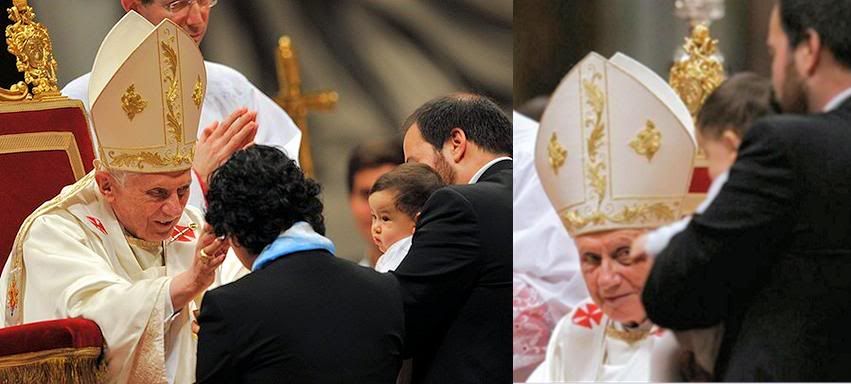
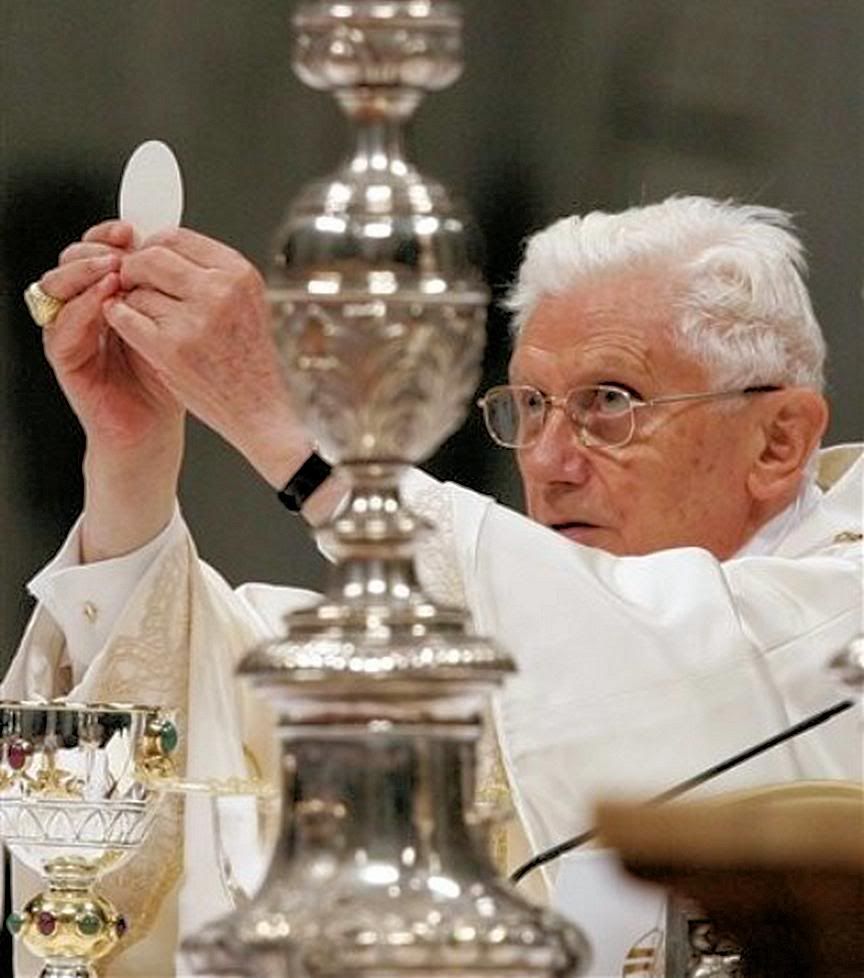
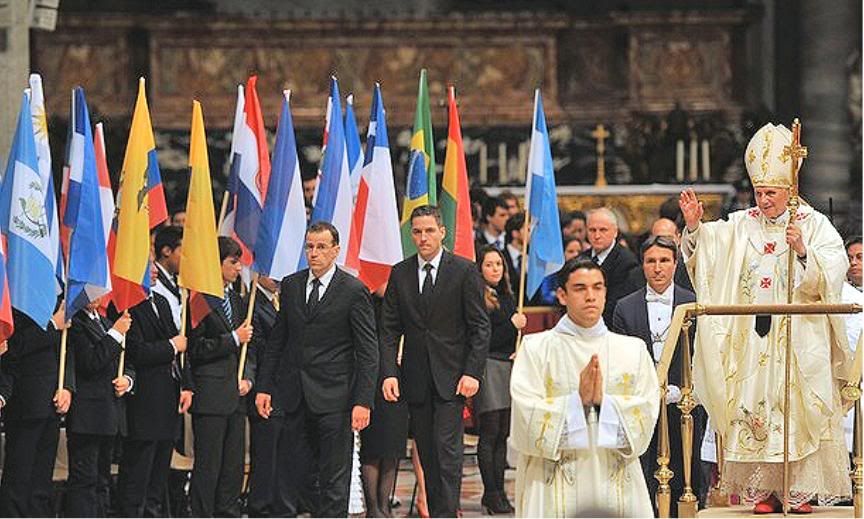
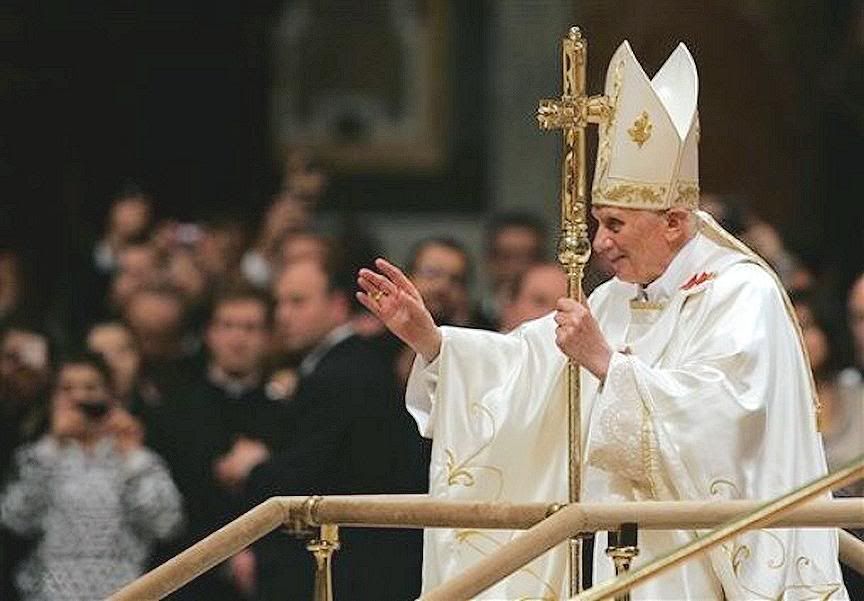

[Modificato da TERESA BENEDETTA 13/12/2011 18:23] |
| |
 13/12/2011 06:51 13/12/2011 06:51 |
|
| | | OFFLINE | | Post: 23.939
Post: 6.509 | Registrato il: 28/08/2005
Registrato il: 20/01/2009 | Administratore | Utente Master | |
|
 Rodari is, of course, being ironic in his title....
Wanted: A new CDF Prefect, preferably
Rodari is, of course, being ironic in his title....
Wanted: A new CDF Prefect, preferably
someone like Joseph Ratzinger
by Paolo Rodari
Translated from

Dwcember 10, 2011
The news that in February 2012, Benedict XVI will most likely confer the beretta on a dozen new cardinals - at which time there would only be 108 cardinal electors of a possible 120 due to cardinals turning 80 - is not the only other important papal news for 2012 other than the trip to Mexico and Cuba.
There will also be a crucial change in the Roman Curia with the retirement of Cardinal William Joseph Levada as Prefect of the Congregation for the Doctrine of the Faith. He has decided to retire when he turns 75 and will go back to San Framcisco, where he was Archbishop from 1995 until Benedict XVI named him to succeed himself as the head of the Curia's most important congregation.
It was felt that Levada was called by the then new Pope principally to look after the 'disciplinary' section of the CDF which had been entrusted since 2001 with handling abuse cases against priests.
As Archbishop of San Francisco, Levada had firsthand experience of the crisis that erupted in the United States, and in 2006, he was called to give testimony to a US court on abuses committed by some priests in his previous diocese of Portland before he came to San Francisco.
It is believed Benedict XVI - who had worked with Levada for several years when the latter was on the staff of the CDF - felt that his experience with the crisis would be invaluable at the CDF.
The situation has by now been 'normalized', especially with the promulgation of new norms to update those issued with John Paul II's 2001 Sacramentorum sanctitatis tutela that gave the CDF competence over the abuse cases.
Many believe that the CDF should pay more attention once more to its major function, which is to issue documents to explain or clarify Catholic doctrine, an invaluable activity that had augmented the influence of Cardinal Joseph Ratzinger in the previous PontificAte.
The name most observers have bruited about as the most probable succesor to Levada at CDF is the Bishop of Regensburg, Gerhard Ludwig Kueller. A member of the German commission for the doctrine of the faith from 1998-2002, Mueller is the president of the Regensburg-based Papst Benedikt XVI Institut, publisher of Joseph Ratzinger's Collected Works.
That qualification has made him, along with Cardinal Joachim Meisner of Cologne, the German prelate with the most access to the Pope.
But many are asking whether that association would suffice to bring him to the Curia. From what Il Foglio can learn, nothing has yet been decided about Levada's successor.
A principal problem about Mueller is that he has openly acknowledged the Peruvian Dominican Gustavo Gutierrez, often called the father of liberation theology in Latin America, as his mentor. Twice in the 1980s, the CDF, under Cardinal Ratzinger, had to intervene publicly twice on doctrinal questions raised by Gutierrez and his followers.
In 1983, the future Pope asked Gutierrez for clarifications on the links between liberation theology and Marxism - positions which Mueller appears to assume in his repealed calls for the Church to commit herself to the struggle against 'neo-liberal capitalism'.
[I think the more important question is whether Mueller has the intellectual heft and Catholic orthodoxy to be the CDF Prefect. In this case, orthodoxy would seem to be more critical.]
Benedict XVI has decreed a Year of Faith that starts in 2012, to mark the 50th anniversary of the start of the Second Vatican Council.
"The Year of Faith should be considered one of the initiatives characteristic of this Pontificate", said Vatican spokesman Fr. Federico Lombardi shortly after it was announced.
It means that for the Pope of the correct hermeneutic for Vatican II, clarity of the Magisterium, and therefore of the correct transmission of the faith, is an essential priority.
That is why the person who will be the next CDF Prefect will be decisive. And Vatican insiders summarize the ideal candidate briefly as 'not necessarily a theologian but a teacher of the Magisterium'. [Cardinal Ratzinger was both! Benedict XVI's singular and obvious handicap with respect to John Paul II is, of course, that he does not have a Cardinal Ratzinger to partner with! But then, Cardinal Ratzinger was sui generis. What he brought to John Paul II was at once more fundamental and far-reaching than the diplomatic partnership that the future Pius XII provided his predecessor Pius XI, or that the future Paul VI provided Pius XII.]
These observers think that Benedict XVI is far more concerned about naming the right CDF prefect than about possible curial, metropolitan and geographical 'quotas' in the coming consistory (or consistories).
I can't think of any figure in the Roman Curia today who even comes close to being a Ratzinger figure for Benedict XVI. Cardinal Marc Ouellet at Bishops is probably closest to him philosophically, and I am glad that they have weekly meetings because of the nature of Cardinal Ouellet's job, but that is far from the Wojtyla-Ratzinger partnership. As for Cardinal Levada's successor, the two I can think of who are both theologians as well as great 'teachers of the Magisterium' and unquestionably orthodox, have both been recently named archbishops of very important and critical dioceses - Cardinal Scola in Milan, and Archbishop Chaput in Philadelphia. The Pope could play it safe and move Cardinal Amato back to CDF as its head and name someone else at Saints. Or he could elevate Mons. Luis Ladaria Ferrer, now CDF secretary, and by all accounts, a most impressive and orthodox theologian though he is Jesuit. This is all idle speculation, of course. The Pope knows all his bishops well, and I'm sure he will surprise us once again with his choice.
[Modificato da TERESA BENEDETTA 13/12/2011 06:56] |
| |
 13/12/2011 09:01 13/12/2011 09:01 |
|
| | | OFFLINE | | Post: 23.940
Post: 6.510 | Registrato il: 28/08/2005
Registrato il: 20/01/2009 | Administratore | Utente Master | |
|
 I've chosen to translate Andrea Tornielli's blog entry rather than his article because there is more in the blog that's pertinent and interesting...
In my opinion, Mons. Lefebvre would
I've chosen to translate Andrea Tornielli's blog entry rather than his article because there is more in the blog that's pertinent and interesting...
In my opinion, Mons. Lefebvre would
have agreed by now to the Vatican preamble
Translated from

Dec. 11, 2011
In the VATICAN INSIDER, I have just posted an article dedicated to the now imminent reply from Mons. Bernard Fellay, Superior-General of the FSSPX, to the Vatican which gave the schismatic society last September a Doctrinal Preamble to sign if they agreed with it.
Fellay, who said last September that he could not acceot the Preamble as is, returned to the question in his long homily on the Feast of the Immaculate Conception, in which he said, among other things:
"You have heard that there is a proposal from Rome which some claim ;we are ready to accept', but the problem is that there is always a condition. And this condition, however it is formulated, is fundamentally always the same: that we must accept the Second Vatican Council.
"In summary, the current situation is this: They are telling us, 'Yes, you can criticize the Council but on one condition: you must accept it'. But we say: 'How can we criticize it a posteriori?' I think that is an honest summary of the present situation".
[Fellay, of course, is being downright dishonest on many levels. When the FSSPX entered into doctrinal talks with the CDF, they specified the areas they disputed about Vatican-II - religious freedom, ecumenism, and collegiality. Now, it turns out that they really want to reject all of Vatican II - yet that was not what the discussions were about. Moreover, their own founder, Mons. Lefebvre, was a Council Father and had signed all the Council documents. In effect, it was only when he saw the extent of the post-Conciliar liturgical reform that he decided his society could no longer be in communion with Rome. His successors extended the objections to the other areas they discussed with the Vatican, and now they want the whole nine yards. This holier-than-thou attitude has truly become insufferable and is almost an act of contempt and disdain for Benedict XVI who has taken all the steps he can to make it easier for the FSSPX to make a graceful re-entry into the Church. How can a relative handful of snooty 'Catholics' - let us assume they have a million members all told worldwide - have the presumption to think that they alone see the light, they alone can decide what the Church Magisterium can be? It is not for them to dictate it, it is for them to follow. For all their sanctimony, they are guilty of the deadly sins of arrogance, presumption, self-centeredness and utter lack of charity. All the rosaries they ask their members to pray should be offered instead so that the Holy Spirit may enlighten them!]]
"The spirit of the world," Fellay said in his homily, "has been introduced into the Church. Therefore we must fight not only external enemies but against a non-Catholic spirit that has insinuated itself into the Church. This change, this introduction of this spirit has been clear since the Second Vatican Council. It's a great mystery - as if the devil had put his foot into a shrine. It is something that makes one shiver. It's like a disease that has entered the body".
According to the FSSPX superior-general, a point has been reached that "manifests the depth of the problem". One "must acknowledge that Rome has made a gesture towards us, but if Rome tells us to accept the Preamble in any case, we cannot do that."
He went on to say that the problem for the Church is not represented by the FSSPX's dissent but by the presence of a non-Catholic spirit within the Church. [News flash for Mons. Fellay. That was always obvious to right-thinking Catholics since the progressivist excesses that followed Vatican-II. In fact, those responsible for that chaos have always claimed to represent 'the spirit of Vatican II' - and that is obviously the non-Catholic spirit that entered the Church. It might well be the devil - it certainly is not the Holy Spirit, whom these modern-day 'spiritualists' (to use a term that referred to the medieval Franciscan utopian-dissenters) do not seem to credit for anything. And not at all by stealth, but openly and triumphantly - at least until about seven years ago when a Pope declared 'This is the only way Vatican II can be interpreted' in a magisterial act - and since then, that 'spirit' has been in retreat. May it be exorcised completely soon!]
Fellay's words recall those pronounced by Paul VI - a Pontiff who certain;y is not loved by the Lefebvrians [he had the misfortune or misjudgment of approving and presiding over a shockingly radical change to a rather bastardized liturgy!] - who said in a 1972 homily that "The smoke of Satan has entered the temple of God. It was thought that the Council would be followed by a time of daylight for the Church. But instead it has been a time of dark clouds, of storms, of darkness".
In a conversation with his friend, the French philosopher Jean Guitton, Paul VI said: "What strikes me, when I consider the Catholic world, is that that within Catholicism it sometimes seems as if non-Catholic thinking predominates, and it may be that tomorrow, it is this kind of thinking that will prove to be stronger. But that will never represent the thinking of the Church. It is necessary that a small flock remains, no matter how small it is". [He certainly could not have meant a 'small flock' like the Lefebvrians! He must have meant something like the 'creative minorities' that Cardinal Ratzinger spoke about much later.]
The difference is that while Paul VI was speaking about this diabolical intromission right after the Council, during a time of dispute and the immediate post-Conciliar crisis. Fellay and his fraternity attribute very responsibility to the Council itself.
It will be some more days before the FSSPX response to the Vatican arrives. They have taken all the time to consider the Vatican offer. But it is time for them to take a stand.
I'd like to add a personal comment that is not present in my INSIDER article. Fellay has been saying - and therefore one can hypothesize that this will be his answer - that the FSSPX cannot accept Vatican II. Some of his members say that there can be no agreement because of the 'confusion' that reigns in a Church that, they claim demands obedience form the Lefebvrians but not from others. [The difference is that the other dissident Catholics have chosen to remain within the Church - though they would perhaps do better by leaving.
Personally, I think that if Fellay's response will be dilatory, or will demand changes that are unacceptable to the Holy See [at least this seems to be what Fellay's public statements and the general attitude in the Fraternity are leading up to).
He will cite the need to conserve the purity of the faith and authentic Tradition (of which the Lefebvrians think of themselves as the legitimate custodians - to the point that they dispute the Pope and his Magisterium.
But I also think that the true, real and greater difficulty is represented by the more radical positions held by many within the FSSPX itself, where a stable group has no intention at all of going back to full communion with Rome because they think that Rome is no longer in communion with Catholic tradition.
I sincerely wish that this will not be so, and that the many, repeated, important and courageous openings by Pope Benedict XVI, the hand he has extended, the willingness he has shown, may still result in a positive solution.
I have been asking myself these days what Mons. Lefebvre himself would have done at this point if he were still leading the FSSPX - after the liberalization of the Missal and the offer of a canonical structure that would allow autonomy for the FSSPX.
I am convinced - and this is absolutely a personal opinion - that he would have said Yes long ago, happy to be able to bring back the FSSPX in communion with the Pope.
Let us hope that what prevails will be nostalgia for communion with the Successor of Peter, and not the beliefs of those who think that the religion of Vatican-II, of Paul VI, of John Paul II and Benedict XVI is different from the Catholic religion professed till 1962!
|
| |
 14/12/2011 10:37 14/12/2011 10:37 |
|
| | | OFFLINE | | Post: 23.941
Post: 6.511 | Registrato il: 28/08/2005
Registrato il: 20/01/2009 | Administratore | Utente Master | |
|



 Tuesday, December 13, Third Week of Advent
Tuesday, December 13, Third Week of Advent
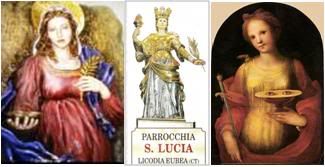 ST. LUCIA (Sicily, 283-304), Virgin and Martyr
ST. LUCIA (Sicily, 283-304), Virgin and Martyr
Born to a wealthy family, Lucy is said to have vowed herself to virginity,
refused to marry a man chosen by her family, and gave away her dowry
to the poor. For her staunch defense of her faith in Christ against the
prevailing society of her day, she was executed during the Diocletian
persecution. Legend has it that her eyes were gouged out before she was
put to death, an event commemorated in her images and her veneration
as the patroness of eyesight. Although little historical fact is known about
her, she is venerated as a saint by all the Christian churches, and is one
of only seven women (including Mary) mentioned in the Canon of the Mass.
Lutherans in the Scandinavian countries have a particular devotion to her.
Readings for today's Mass:
www.usccb.org/bible/readings/121311.cfm
No events announced for the Holy Father today.
OR for 12/12-12/133:

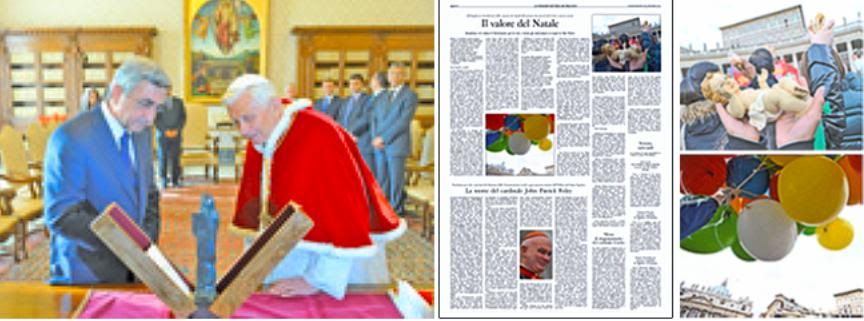 The double issue has coverage of the Pope's pastoral visit to the Santa Maria delle Grazie parish and his Angelus afterwards, along with his audience with the Armenian President and his condolence for the death of US Cardinal John Patrick Foley. Other Page 1 news: The IMF and credit rating agencies are skeptical of the European plan for dealing with the financial crisis and the threatened collapse of the euro; and in Russia, President Medvedev and Prime Minister Putin yield to dot the pressure of mounting public protests to launch an investigation into alleged frauds in the recent parliamentary elections, in which their party had nonetheless lost much ground.
Sorry to have been away all of Tuesday and unable to put in any work on the Forum...Fortunately, there were no major papal news stories yesterday.
The double issue has coverage of the Pope's pastoral visit to the Santa Maria delle Grazie parish and his Angelus afterwards, along with his audience with the Armenian President and his condolence for the death of US Cardinal John Patrick Foley. Other Page 1 news: The IMF and credit rating agencies are skeptical of the European plan for dealing with the financial crisis and the threatened collapse of the euro; and in Russia, President Medvedev and Prime Minister Putin yield to dot the pressure of mounting public protests to launch an investigation into alleged frauds in the recent parliamentary elections, in which their party had nonetheless lost much ground.
Sorry to have been away all of Tuesday and unable to put in any work on the Forum...Fortunately, there were no major papal news stories yesterday.
[Modificato da TERESA BENEDETTA 14/12/2011 13:53] |
| |
 14/12/2011 12:17 14/12/2011 12:17 |
|
| | | OFFLINE | | Post: 23.942
Post: 6.512 | Registrato il: 28/08/2005
Registrato il: 20/01/2009 | Administratore | Utente Master | |
|



 Wednesday, December 14, Third Week of Advent
Wednesday, December 14, Third Week of Advent
 ST. JUAN DE LA CRUZ (John of the Cross) (Spain, 1541-1591)
ST. JUAN DE LA CRUZ (John of the Cross) (Spain, 1541-1591)
Carmelite, Reformer, Mystic, Theologian, Poet, Doctor of the Church
Benedict XVI dedicated his catechesis on February 16, 2011, to this towering figure from 16th century Spain.
www.vatican.va/holy_father/benedict_xvi/audiences/2011/documents/hf_ben-xvi_aud_20110216...
There is probably no spiritual partnership as blessed and endowed with grace as that of the two great mystics and writers who flowered in the Spain of the Counter-Reformation - Teresa de Jesus and Juan de la Cruz, both sprung from the soil of Castile, the female and male faces of 16th century spirituality. Contemporaries and friends, they worked together to reform the Carmelite Order and experienced the fate of all reformers who are rejected by the establishment. Juan's life was a true identification with the Cross from which he took his name, producing his best poems and writings while languishing in prison, turning his 'dark night of the soul' into luminous prose and verse that continue to be models of mystical theology as well as undying literature.
Readings for today's Mass:
www.usccb.org/bible/readings/121411.cfm
AT THE VATICAN TODAY
General Audience - At the Aula Paolo VI, the Holy Father reflects on Jesus's praying before he performed his miracles such as the healing of the deaf-mute recounted in the Gospel of Mark and raising Lazarus from death. He pointed out the profound link between Jesus's divine relationship with the Father from whom he derives his powers and his human compassion for the suffering of his fellowmen.
OR today.

Papal Mass at St. Peter's Basilica to celebrate the bicentennial of independence for the Latin American nations
'A new vocation for hope'
The Holy Father announces he will travel to Mexico and Cuba before Easter next year
Other Page 1 news: An editorial on the presence of the Latin American national flags at St. Peter's at the Monday Mass; and stories on the annual awarding of the Nobel Prizes in Oslo, with a tribute to this year's Nobel Prize for Literature, the 80-year-old Swedish poet Tomas Transtroemer; European Council president says recent European accord on uniform budgetary regulations do not suffice for stability, but new measures are needed to make the economy grow again; President Obama meets the Iraqi Prime Minister in Washington as the US prepares to withdraw its last 6,000 soldiers from Iraq in the next few days.
 A most unpleasant shock in reviewing the papacy-and-Vatican headline summaries online yesterday was the alacrity with which the Anglophone media played up an AP story whose headline every outlet adapted verbatim: "Mexican worshippers underwhelmed by papal visit".
A most unpleasant shock in reviewing the papacy-and-Vatican headline summaries online yesterday was the alacrity with which the Anglophone media played up an AP story whose headline every outlet adapted verbatim: "Mexican worshippers underwhelmed by papal visit".

The Daylife roundup had no less than seven pages of sumamries like the above, purveying a mean-spirited story in which the AP writer extrapolates the comments elicited from a couple of pilgrims and a storekeeper to draw the fallacious conclusion that all the millions of pilgrims who came to honor Our Lady of Guadalupe at her shrine outside Mexico City on Monday were all 'underwhelmed' by the news that the Pope would visit Mexico; and on the testimony of the aforementioned shopkeeper, that no one is interested in Benedict XVI compared to his predecessor, whose merchandise are bestsellers whereas the interest in Benedict XVI is so insignificant there are even no Benedict items for sale. The story is in the same denigratory vein as preparatory stories from Lourdes before the Pope visited in September 2008 - so negative that one almost feared there would only be a scattering of pilgrims to welcome Benedict XVI! Yet how can one forget the fervent pilgrims who thronged the Marian procession and the two papal Masses in Lourdes... The Schadenfreude dripping from the AP story on the Mexico visit is so patent it is disgusting. And it is very sad, indeed, when any Catholic takes the kind of partisan favoritism regarding Popes as the AP writer describes. As if devotion to one Pope means disregard or dismissal of any other Pope, who is as much the Vicar of Christ as the 'favorite', and in the case of Benedict XVI, he is, of course, the only Vicar of Christ on earth at this time. To disregard or dismiss him is to disregard or dismiss Christ - or at the very least, not to understand what the role of the Pope is.
[Modificato da TERESA BENEDETTA 14/12/2011 13:59] |
| |
 14/12/2011 19:37 14/12/2011 19:37 |
|
| | | OFFLINE | | Post: 23.943
Post: 6.513 | Registrato il: 28/08/2005
Registrato il: 20/01/2009 | Administratore | Utente Master | |
|
 At the end of the Papal Mass on Monday, a 'canto Mariano' (Marian hymn) to Nuestra Senora de Guadalupe was sung - it was the first time I heard it - and I loved it right away, for the lyrics (which are found in the online libretto for the Mass) and the typically lively Mexican flavor of the music (rather like 'Las Mananitas' - but with a better, un-pedestrian melody - the traditional Mexican birthday song that became associated with the cursillos de Cristianidad, a lay movement of Catholic renewal through a guided three-day retreat that began in Spain in the 1940s, and spread worldwide in the 1960s-1980s). For once, the use of native guitars and drums was welcome and appropriate in St. Peter's Basilica for the music of the Papal Mass. I was intending to insert the hymn and a translation in my post on the Mass, but the following item from the Catholic Herald written on the feast of San Juan Diego on December 9 gives me a more appropriate post to peg it on. However, the hymn that Fr. Lucie-Smith refers to appears to be a more popular one called 'La Guadalupana', not the one sung at the Vatican, which is more formally called 'La Virgen de Guadalupe'.
Our Lady of Guadalupe is the essence
At the end of the Papal Mass on Monday, a 'canto Mariano' (Marian hymn) to Nuestra Senora de Guadalupe was sung - it was the first time I heard it - and I loved it right away, for the lyrics (which are found in the online libretto for the Mass) and the typically lively Mexican flavor of the music (rather like 'Las Mananitas' - but with a better, un-pedestrian melody - the traditional Mexican birthday song that became associated with the cursillos de Cristianidad, a lay movement of Catholic renewal through a guided three-day retreat that began in Spain in the 1940s, and spread worldwide in the 1960s-1980s). For once, the use of native guitars and drums was welcome and appropriate in St. Peter's Basilica for the music of the Papal Mass. I was intending to insert the hymn and a translation in my post on the Mass, but the following item from the Catholic Herald written on the feast of San Juan Diego on December 9 gives me a more appropriate post to peg it on. However, the hymn that Fr. Lucie-Smith refers to appears to be a more popular one called 'La Guadalupana', not the one sung at the Vatican, which is more formally called 'La Virgen de Guadalupe'.
Our Lady of Guadalupe is the essence
of what evangelisation should be about
by Fr. Alexandre Lucie-Smith

Dec. 9, 2011
The conversion of Mexico was the single most successful mission undertaken by the Catholic Church. Why did it succeed when others failed?
By Fr Alexander Lucie-Smith on Friday, 9 December 2011
Our Lady of Guadalupe is the essence of what evangelisation should be about
Candles decorated with images of Our Lady of Guadalupe Photo: CNS photo/Rick Musacchio, Tennessee Register
I have been to Guadalupe, in Mexico City, and I have seen the tilma, the image of the Blessed Virgin Mary imprinted on the cloak of the Aztec Juan Diego. [Fr. Smith,tThe tilma is the cloak itself, from the Aztec word for cloak or mantle.]
The word “icon” is rather overused today, but for me an icon is a picture that provides the viewer with not just a picture, but an opening to an entire world. And such is the icon of Our Lady of Guadalupe.
The story of Guadalupe is in itself extraordinary. The words of the Blessed Virgin addressed to the seer Juan Diego are simplicity itself and yet so profound: “My dear son, whom I love tenderly, know that I am the Virgin Mary, Mother of the true God, Giver and Maintainer of life, Creator of all things, Lord of heaven and earth, Who is in all places. I wish a temple to be erected here where I can manifest the compassion I have for the natives and for all who solicit my help…… Do not let anything afflict you, and do not be afraid of any illness or accident or pain. Am I not here who am your Mother? Are you not under my shadow and protection? Is there anything else that you need?”The shrine was accordingly built, and within a few years eight million indigenous people had embraced the Catholic religion.
This simple fact is the greatest marvel wrought by Our Lady of Guadalupe, and it marks out the mission in New Spain (South America and the Caribbean) in the mid-sixteenth century as the single most successful mission ever undertaken by the Catholic Church.
Why was it such a success, when, for example, other missions, despite huge efforts (the one to Japan in the nineteenth century, for example) have yielded little fruit? The answer is to be found in the concept of inculturation.
The icon of the Virgin of Guadalupe is utterly Catholic and at the same time firmly rooted in the indigenous traditions of the Aztec people. It is emblematic of the way that the people of New Spain recognised and embraced Catholicism as something native, not alien, to their tradition; something that they had in a sense always longed for and always known, had they but known it. [This exactly is what Benedict XVI said in Aparecida in 2007, for which he was roundly castigated by the media and many anti-Church scholars and politicians for seeking to 'gloss over the imposition' of Catholicism on the indigenous peoples of South America and the Caribbean.]
Put more simply, the way Catholicism was preached to them resonated with their life experience, their culture, their view of the world; there was a natural fit between life and faith; they found, consequently, in Catholicism the completion of their culture they had always sought.
In other words, the icon of Guadalupe contains for us the essence of what evangelisation should be about. We need to learn from this icon; and we need to learn from the words addressed by the Virgin to Juan Diego. This is the language we want to hear, and the language we the Church need to speak.
Juan Diego’s feast is today, the anniversary of the first apparition in 1531. And the Virgin of Guadalupe is celebrated on Monday. In Mexico thousands of pilgrims will visit the shrine to gaze on the icon, and they will sing a hymn, whose key phrases are these:
"Suplicante juntaba las manos, Era mexicana, Era mexicana su porte y su faz" (Beseeching, she put her hands together. She was Mexican - Mexican in face, and Mexican in countenance".
The Virgin in the icon is a Mexican woman, in dress and features. God’s most holy Mother identifies herself completely with her people. And in return her people are truly her people: "Desde entonces para el mexicano Ser Guadalupano, Ser Guadalupano es algo esencial". (Since then for the Mexican, to be a Guadalupan is something that is essential).
For if she is with us, then we are with her. It is “something essential”, something that is at the foundation of our identity. But this is not just a Mexican thing, or an American thing, it is universal, truly Catholic. So, let the whole world celebrate Our Lady of Guadalupe on Monday. [And everyday!]
Here are the lyrics for the hymn sung at the Vatican:
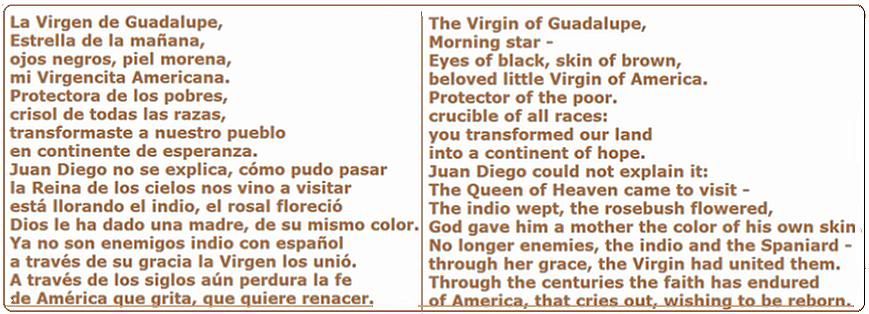 Three or four years ago, I put together in the PRF a little compendium of the results of scientific investigations into the humanly inexplicable image on Juan Diego's tilma. It was the result of a quick random search online in which I picked up what I felt contained enough scientific information that was presented in an appropriate way. Despite my good intentions, I have never found time to give the topic the research, at least int erms of what is available online. But here's another random item I came across today which dates back to 2001 but is nonetheless still astounding for those like me who only has random spotty knowledge of the subject. ZENIT is credited as the source by the Catholic Resources Center, but besides the year, the date is not mentioned, so I'll try to look it up.
The images found within the eyes
Three or four years ago, I put together in the PRF a little compendium of the results of scientific investigations into the humanly inexplicable image on Juan Diego's tilma. It was the result of a quick random search online in which I picked up what I felt contained enough scientific information that was presented in an appropriate way. Despite my good intentions, I have never found time to give the topic the research, at least int erms of what is available online. But here's another random item I came across today which dates back to 2001 but is nonetheless still astounding for those like me who only has random spotty knowledge of the subject. ZENIT is credited as the source by the Catholic Resources Center, but besides the year, the date is not mentioned, so I'll try to look it up.
The images found within the eyes
of the Virgin on the tilma are
snapshots of its first unfolding

Digital technology is giving new leads for understanding a phenomenon that continues to puzzle science: the mysterious eyes of the image of Our Lady of Guadalupe.
The image, imprinted on the tilma of a l6th-century peasant, led millions of indigenous Indians in Mexico to convert to the Catholic faith. Earlier this month in Rome, results of research into the famed image were discussed by engineer José Aste Tonsmann of the Mexican Center of Guadalupan Studies during a conference at Pontifical Regina Apostolorum Athenaeum.
For over 20 years, this graduate in environmental systems engineering at Cornell University has studied the image of the Virgin left on the rough maguey-fiber fabric of Juan Diego's tilma. What intrigued Tonsmann most were the eyes of the Virgin.
Though the dimensions are microscopic, the iris and the pupils of the image's eyes have imprinted on them a highly detailed picture of at least 13 people, Tonsmann said. The same people are present in both the left and right eyes, in different proportions, as would happen when human eyes reflect the objects before them.
Tonsmann said he believes the reflection transmitted by the eyes of the Virgin of Guadalupe is the scene on Dec. 9, 1531, during which Juan Diego showed his tilma, with the image, to Bishop Juan de Zumárraga and others present in the room. [Actually, according to the stendard narration, he wasn't 'showing the tilma' - he unfolded it to show the bishop the roses he brought back from Tepeyac, and he was as surprised as the bishop to find an image on the cloak.]
In his research, Tonsmann used a digital process used by satellites and space probes in transmitting visual information.
He insisted that the basic image "has not been painted by human hand." As early as the 18th century, scientists showed that it was impossible to paint such an image in a fabric of that texture. The "ayate" fibers used by the Indians, in fact, deteriorate after 20 years. Yet, the image and the fabric on which it is imprinted have lasted almost 470 years.
Tonsmann pointed out that Richard Kuhn, the 1938 Nobel Prize winner in chemistry, found that the image did not have natural animal or mineral colorings. Given that there were no synthetic colorings in 1531, the image is inexplicable.
In 1979, Americans Philip Callahan and Jody B. Smith studied the image with infrared rays and discovered to their surprise that there was no trace of paint and that the fabric had not been treated with any kind of technique.
"[How] it is possible to explain this image and its consistency ... on a fabric that has not been treated?" Tonsmann asked. "[How] is it possible that, despite the fact there is no paint, the colors maintain their luminosity and brilliance?"
Tonsmann, a Peruvian engineer, added, "Callahan and Smith showed how the image changes in color slightly according to the angle of viewing, a phenomenon that is known by the word iridescence, a technique that cannot be reproduced with human hands." [The same phenomenon is described about the veil of Manoppello believed to have the imprint of the face of Jesus.]
The scientist began his study in 1979. He magnified the iris of the Virgin's eyes 2,500 times and, through mathematical and optical procedures, was able to identify all the people imprinted in the eyes.
The eyes reflect the witnesses of the Guadalupan miracle the moment Juan Diego unfurled his tilma before the bishop, according to Tonsmann.
In the eyes, Tonsmann believes, it is possible to discern a seated Indio, who is looking up to the heavens; the profile of a balding, elderly man with a white beard, much like the portrait of Bishop Zumárraga painted by Miguel Cabrera to depict the miracle; and a younger man, in all probability interpreter Juan González.
Also present is another Indio of striking features with a beard and mustache, who unfolds his own tilma before the bishop; a woman of dark complexion, possibly a Negro slave who was in the bishop's service; and a man with Spanish features who looks on pensively, stroking his beard with his hand.
In summary, the Virgin's eyes bear a kind of instant picture of what occurred at the moment the image was unveiled in front of the bishop, Tonsmann says.
Moreover, in the center of the pupils, on a much more reduced scale, another scene can be perceived, independent of the first, the scientist contends. It is that of an Indian family made up of a woman, a man and several children. In the right eye, other people who are standing appear behind the woman.
Tonsmann ventured an explanation for this second image in the Virgin's eyes. He believes it is a message kept hidden until modern technology was able to discover it just when it is needed.
"This could be the case of the picture of the family in the center of the Virgin's eye," the scientist said, "at a time when the family is under serious attack in our modern world."
It's hard to believe that when Hilary Clinton was taken to the Basilica in Tepeyac, not one of her aides had even thought to provide her with a briefing paper about the image, because the first question she asked, as reported by the news agencies at the time (2008 or 2009), was, "Who painted it?"
[Modificato da TERESA BENEDETTA 14/12/2011 20:38] |
| |
 14/12/2011 21:30 14/12/2011 21:30 |
|
| | | OFFLINE | | Post: 23.944
Post: 6.514 | Registrato il: 28/08/2005
Registrato il: 20/01/2009 | Administratore | Utente Master | |
|
 Pope Benedict: 'We must trust
Pope Benedict: 'We must trust
God’s answers to our prayers'

December 14, 2011
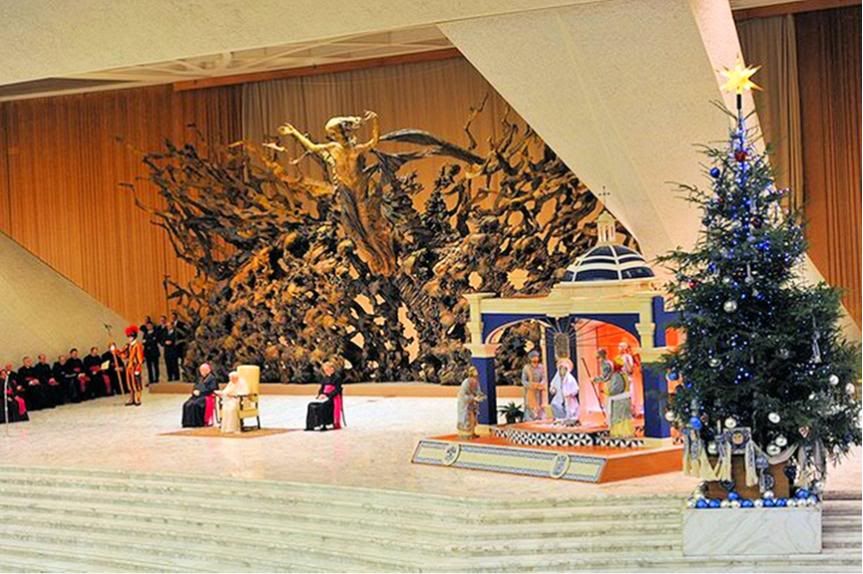
"When we pray we must not expect the immediate fulfillment of our petitions, of our will" but instead, must accept the will of God, who "is the God of life, who brings hope, capable of reversing humanly impossible situations", said Pope Benedict XVI Wednesday as he delivered the latest in his series of catecheses on prayer in the Paul VI Hall.
Continuing his focus on Christ’s own prayer, with special attention to the context of his miracles of healing, Pope Benedict said:
Both the cure of the deaf-mute man (Mk 7:32-37) and the raising of Lazarus (Jn 11:1-44) show us Jesus at prayer before cases of human suffering.
His prayer on these occasions reveals not only his profound identification with the suffering but also his unique relationship with the Father. In the case of the deaf-mute man, Jesus’s compassion leads him to introduce his prayer with a deep sigh (v. 34). In the case of Lazarus, he is deeply moved by the sorrow of Martha and Mary, and weeps before the tomb of his friend.
Pope Benedict went on to say that, at the same time, Christ saw the tragedy of Lazarus’s death in the light of the Father’s will and of his own identity and mission.
Jesus’s example teaches us that in our own prayers we must always trust in the Father’s will and strive to see all things in the light of his mysterious plan of love. We too must join petition, praise and thanksgiving in every prayer, knowing that the greatest gift God can give us is his friendship, and that our example of prayer can open our hearts to our brothers and sisters in need and point others to God’s saving presence in our world.
The Holy Father had this greeting for English-speaking pilgrims:
I offer a warm welcome to all the English-speaking visitors present, including the groups from Vietnam, Nigeria and the United States. As we prepare to celebrate the Saviour’s birth at Christmas, I cordially invoke upon you and your families his abundant blessings of joy and peace!
This Wednesday’s catechesis was the latest in a series of catechetical reflections on prayer which began in May this year.
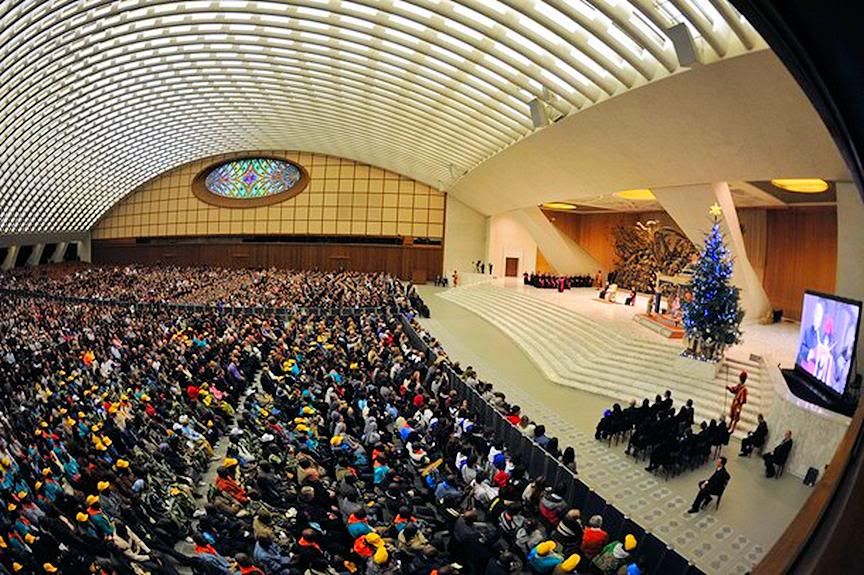 Here is a translation of the catechesis
Here is a translation of the catechesis:
Dear brothers and sisters:
Today I wish to reflect with you on the prayer of Jesus linked to his wondrous healing actions. The Gospels present various situations in which Jesus's prayer precedes the beneficial and healing work of God the Father acting through him.
It is the kind of prayer that once again manifests his unique relationship of knowledge and communion with the Father, even as Jesus allows himself to be involved, with great human participation ,in the distress of his friends - for example, of Lazarus and his family, and of the so many poor and ailing persons whom he wished to aid concretely.
A significant case was the healing of the deafmute (cfr Mk 7,32-37). The account of the evangelist Mark which we just heard shows that Jesus's healing action was linked to an intense relationship with his neighbor - in this case, the handicapped man - as he did with his Father.
The scene of the miracle is carefully described as follows: "He took him off by himself away from the crowd. He put his finger into the man’s ears and, spitting, touched his tongue; then he looked up to heaven and groaned, and said to him, 'Ephphatha!' (that is, 'Be opened!')" (7,33-34).
Jesus wanted the healing to take place 'away from the crowd - it would seem, not only to keep the miracle hidden from the people to keep them from making restrictive and distorting interpretations of Jesus himself.
His choice to take the ailing man apart meant that at the moment of healing, Jesus and the deafmute were by themselves, brought together by a singular relationship. With one gesture, the Lord touches the ears and tongue of the man - the places where the man is infirm.
The intensity of Jesus's attention is manifested even in the unusual features of the healing: He uses his own fingers and even his own saliva. And even the fact that the evangelist reports the original word pronounced by the Lord, "Effata", or 'Open up' - proves the singular nature of the scene.
But the central point of this episode is the fact that Jesus, at the moment of working the healing, directly seeks his relationship with the Father. Indeed, the account says that "he looked up to heaven and groaned" (v 34).
His attention to the sick man, Jesus's concern for him, are linked to his profound attitude of prayer towards God. And his 'groan' is described by a verb that in the New Testament means aspirating something good that one does not yet have (cf Rm 8, 33).
The entire account, then, shows that his human involvement with the disabled man bring Jesus to prayer. Once more his unique relationship with the Father emerges, his identity as the only-begotten Son.
In him, through his person, God's beneficial and healing action is manifested. It's not by chance that the immediate reaction of the people after the miracle recalls the assessment of Creation at the start of Genesis: "He has done all things well..." (Mk 7, 23).
Prayer enters clearly in Jesus's healing action, when he looks up to heaven. The power which healed the deafmute was surely provoked by his compassion for him. but it came from his recourse to the Father. Two relationships meet here: the human relationship of compassion with man, which enters into the relationship with God, and this becomes healing.
In the Johannine account of the resurrection of Lazarus, this same dynamic is proven even more obviously (cfr Jn 11,1-44). Here, too, are interwoven, on the one hand, Jesus's ties to a friend and with his suffering, and on the other, his filial relationship with the Father.
Jesus's human participation in the case of Lazarus has special features. The entire account repeatedly recalls their friendship, as well as Jesus's friendship with Lazarus's sisters Martha and Mary,
Jesus himself says: "“Our friend Lazarus is asleep, but I am going to awaken him" (Jn 11,11). His sincere affection for his friend is evidenced also by the sisters of Lazarus, as well as by the Jews (cf Jn 11,3; 11,36). It is manifested in Jesus's emotion upon seeing the grief of Martha and Mary and all of Lazarus's friends, leading him to weep - something so profoundly human - as he approaches the tomb:
"When Jesus saw her weeping and the Jews who had come with her weeping, he became perturbed and deeply troubled, and said, 'Where have you laid him?' They said to him, 'Sir, come and see.' And Jesus wept" ![[SM=g7969]](https://im0.freeforumzone.it/up/0/69/3179631.gif) (Jn 11,33-35). (Jn 11,33-35).
This bond of friendship, the participation and emotion of Jesus in the face of the grief of Lazarus's family and acquaintances, is linked in the whole account with a continuous and intense contact with the Father.
From the beginning, the event is read by Jesus in the light of his own identity and mission, and of the glory that awaits him. Indeed, upon getting the news that Lazarus was ill, he comments: “This illness is not to end in death, but is for the glory of God, that the Son of God may be glorified through it (Jn 11,4).
The announcement of the death of his friend was subsequently received by Jesus with profound human grief, but always in clear relation to his relationship with God and the mission entrusted to him, saying: “Lazarus has died. And I am glad for you that I was not there, that you may believe” (Jn 11, 14-15).
The moment of Jesus's explicit prayer to the Father in front of the tomb is the natural outcome of the whole episode, which has played on the double register of his friendship with Lazarus and his filial relationship to God.
Here, too, the two relationships go hand in hand. "Jesus raised his eyes and said, 'Father,' I thank you for hearing me" (Jn 11,41): It is a Eucharist. The statement reveals that Jesus had not ceased one moment to pray for the life of Lazarus. This continuous prayer strengthened his bond with his friend and at the same time, it confirmed Jesus's decision to remain in communion with the will of God, with his plan of love, in which the sickness and the death of Lazarus must be considered as an occasion when God's glory is manifested.
Dear brothers and sisters, reading this narrative, each of us is called on to understand that when we pray to ask the Lord for something, we must not expect an immediate fulfillment of what we ask for., of our will, but rather trust in the will of the Father, reading every event in the perspective of his glory, of his plan of love, often mysterious to our eyes.
That is why, in our prayers, petition, praise and thanksgiving must merge. even when it seems that God is not responding to our concrete expectations. Abandoning ourselves to the love of God, which always precedes and accompanies us, is one of the fundamental attitudes in our dialog with him.
The Catechism of the Catholic Church says this of the prayer of Jesus in the account of the resurrection of Lazarus: "Thanksgiving precedes the event: 'Father, I thank you for having heard me', which implies that the Father always hears his petitions. Jesus immediately adds: 'I know that you always hear me', which implies that Jesus, on his part, constantly made such petitions.
Jesus's prayer, characterized by thanksgiving, reveals to us how to ask: before the gift is given, Jesus commits himself to the One who in giving gives himself. The Giver is more precious than the gift; he is the 'treasure'; in him abides his Son's heart; the gift is given 'as well' (cfr Mt 6,21 e 6,33)» (2604).
This is very important: before the gift is given, to adhere to him who gives: the giver is more precious than the gift. Even for us, therefore, beyond what God gives us when we invoke him, the greatest gift he can give us is his friendship, his presence, his love. He is the precious treasure to seek and to safeguard always.
The prayer that Jesus says while the stone to the entrance of Lazarus's tomb is being removed then presents a singular and unexpected development. Indeed, after he has thanked the Father, he adds: "I know that you always hear me; but because of the crowd here I have said this, that they may believe that you sent me" (Jn 11,42).
With his prayer, Jesus wishes to lead to faith, to total trust in God and his will, and he wants to show that this God who so loved man and the world to send his only begotten-Son (cfr Jn 3,16), is the God of life, the God who brings hope and who can reverse any situation that is humanly impossible.
The trustful prayer of a believer, therefore, is a living testimonial to this presence of God in the world, of his interest in man, of his acting to realize his plan of salvation.
The two prayers of Jesus that we have reflected on, that accompanied the healing of the deafmute and the resurrection of Lazarus, reveal that the profound link between the love of God and love for our neighbor must enter into our prayer.
In Jesus, true God and true man, attention to others, especially those who are needy and suffering, his compassion in the face of the grief of his friend's family, make him address the Father, in that fundamental relationship that guided his whole life.
But the reverse is also true. Communion with the father, the constant dialog with him, impels Jesus to be uniquely attentive to concrete human situations in order to bring man the comfort and the love of God. Relationship with man leads to a relationship with God, and that with God leads us back to our neighbor.
Dear brothers and sisters, our prayer opens the door to God, who teaches us to constantly leave ourselves in order to be able to make ourselves close to others, especially in their moments of trial, to bring them comfort, hope and love.
May the Lord grant that we may be capable of prayer that is ever more intense in order to reinforce our personal relationship with God the Father, open up our heart to the needs of those around us, and feel the beauty of being "children in the Son" together with all our brothers. Thank you.
 The Holy Father before the Nativity scene set up in Aula Paolo VI by the Mexican state of Puebla with hand-carved wooden statues.
The Holy Father before the Nativity scene set up in Aula Paolo VI by the Mexican state of Puebla with hand-carved wooden statues.
[Modificato da TERESA BENEDETTA 16/12/2011 00:50] |
| |
 15/12/2011 01:37 15/12/2011 01:37 |
|
| | | OFFLINE | | Post: 23.945
Post: 6.515 | Registrato il: 28/08/2005
Registrato il: 20/01/2009 | Administratore | Utente Master | |
|
 Cardinal Pell is one of those prelates that I took an instant liking to even before I knew a lot about him and what he stands for, the way I took an instant liking for Cardinal Ruini in Italy and Archbishop Chaput in the US. In the case of all 3, I have come to like them even better and admire them even more as I learn more about them. All three also have quite a few of the qualities that made Joseph Ratzinger so exceptional in the post-Vatican II Church, including their orthodoxy, their intellectual clarity and their principled defiance of political correctness.... Here is an unusual profile of Cardinal Pell from a man who also shares those qualities...
The cardinal 'down under'
Cardinal Pell is one of those prelates that I took an instant liking to even before I knew a lot about him and what he stands for, the way I took an instant liking for Cardinal Ruini in Italy and Archbishop Chaput in the US. In the case of all 3, I have come to like them even better and admire them even more as I learn more about them. All three also have quite a few of the qualities that made Joseph Ratzinger so exceptional in the post-Vatican II Church, including their orthodoxy, their intellectual clarity and their principled defiance of political correctness.... Here is an unusual profile of Cardinal Pell from a man who also shares those qualities...
The cardinal 'down under'
by George Weigel

Dec 14, 2011

In the Baltimore of the 1960s, my canny pastor devised a neat scheme for getting “Father Visitor” (as the confessional doors read) to fill in during the summer for his vacationing curates: bring over newly-ordained Australians from their studies in Rome. There were no language issues (save for those of, er, accent); by the standards of student priests fresh from the Urban College of Propaganda Fidei, the young Aussies were recompensed handsomely and got to see something of the United States; it was win-win, all around.
Thus in the summer of 1967 I met Father George Pell of Ballarat, who, with the oils of ordination still wet on his forehead, spent several months at my parish before embarking on doctoral studies at Oxford. If anyone had told Pell or me that, 38 years later, he would be electing the successor to a Pope whose biographer I had become, I think we both would have thought the prognosticator a little mad.
I recently spent several days with the cardinal archbishop of Sydney on his home turf, where I was giving a series of lectures in support of Campion College, a new Aussie adventure in Catholic liberal arts education, of which Cardinal Pell has been a strong supporter.
Seeing my old friend up close and personal, in venues ranging from solemn high Mass in his beautifully restored cathedral to a wildlife preserve featuring all the strange and wondrous fauna of Australia (the cardinal, inspecting a particularly ungainly wombat: “I wonder what the Creator had in mind here?”) gave me an opportunity to ponder just how great Cardinal Pell’s accomplishment has been.
Pell, who is more a Melbournian than a Sydneysider (although he has been metropolitan archbishop of both great sees), sometimes makes reference to his great Melbourne predecessor, Daniel Mannix, archbishop of the capital of Victoria for 46 years and a leading figure in Australian public life for decades.
Well, if Mannix set the twentieth-century pattern for Catholic prelates Down Under, George Pell will be regarded by historians as the man who set the pattern for the twenty-first century. In doing so, he saved Catholicism in Australia and set it on course toward a vibrant future, evangelically and publicly.
When Pell became archbishop of Melbourne in 1996, Catholic Lite was the order of the day throughout the country, with the usual results: goofball liturgy (one bishop celebrated Mass made up as a clown); dumbed-down catechesis; a collapse in religious vocations and seminary applications; the Church bureaucracy joined at the hip to the hard left in Australian public life.
Reversing this drift toward theological and moral incoherence and public irrelevance was going to be very hard work. Then Pell caught a break: when his seminary faculty threatened to resign en masse because he insisted that the seminarians attend daily Mass, Pell called their bluff, accepted their resignations, filled the seminary with new faculty—and never looked back.
Religious education was reformed; new and vibrant orders of religious women were brought into the archdiocese; a John Paul II Institute on Marriage and the Family was launched; orthodoxy, no longer optional, became interesting again.
Transferred to Sydney in 2001, Pell set about reinvigorating his new archdiocese by seeking, and getting, World Youth Day 2008. Its effects are still rippling through the Sydney metropolitan area — visible, for example, in the 300-plus young people I spoke with at a Theology-on-Tap evening in Parramatta (whose bishop, Anthony Fisher, O.P., is a Pell protégé).
And while doing all this at home, Cardinal Pell has become a major figure on the international Catholic scene. He helped create Vox Clara as a check on English-language liturgical translations. And in recent years he has become a thoughtful critic of environmental radicalism, in which he detects a new paganism filling the piety-gap in post-Christian societies.
All of this has not been without cost, as the cardinal is regularly vilified by his opponents. But the former Australian Rules football star is a battler, who knows the truth of “no pain, no gain.”
Australia and the entire world Church, owe George Pell a large debt of gratitude.
 While searching online for appropriate pictures of Caridnal Pell with Pope Benedict XVI, I came across a book review he had written of LIGHT OF THE WORLD that I did not see this time last year - when much of the commentary on the Pope was about LOTW. And it continues to be a great pleasure rereading them now, and Cardinal Pell's review, with its intellectual and pastoral perspective, is a welcome addition. AD2000 is an Australian Catholic journal that I should look up more often....
No precedent in papal history
While searching online for appropriate pictures of Caridnal Pell with Pope Benedict XVI, I came across a book review he had written of LIGHT OF THE WORLD that I did not see this time last year - when much of the commentary on the Pope was about LOTW. And it continues to be a great pleasure rereading them now, and Cardinal Pell's review, with its intellectual and pastoral perspective, is a welcome addition. AD2000 is an Australian Catholic journal that I should look up more often....
No precedent in papal history
by Cardinal George Pell

Issue of February 2011
The conversation between Pope Benedict and the German journalist Peter Seewald published as Light of the World has no precedent in papal history.
Never before has a Pope given his views in one book on so many neuralgic issues facing the Church, ranging from the use of condoms, the scandals of sexual abuse and of the founder of the Legionaries of Christ, through to the Williamson debacle, the different challenges of secularism and Islam, proper exegesis and the role of the liturgy in Church renewal.
The interviewer is persistent but respectful, and does not descend to the levels of rudeness and aggression we occasionally encounter on Australian television.
The Holy Father has the gifts of simplicity, indeed elegance in his speech and writing and the book makes for easy reading. It will be a best seller in many languages.
This interview continues a practice the Holy Father began when he was in charge of the Congregation for the Doctrine of the Faith of teaching widely and positively. This too was an innovation because the traditional practice of the Congregation for the Doctrine of the Faith was to define a theological error precisely and condemn it with an anathema. One could theologise widely on the issue as long as you avoided the view that was condemned. While this approach is scarcely positive, it minimises misunderstanding and risks.
As Cardinal and Pope, Joseph Ratzinger has explicitly chosen another path, well aware of the risks of misunderstandings, controversy and the ambiguities that will occasionally arise about the status of his teachings.
His priority is to continue the dialogue between faith and reason, to make his contribution to expressing ancient truths in a language which is accessible, not only to Christians, but to modern secularised minds.
As the successor of St Peter his duty is to give regular witness to the truths of the Gospel. And as a matter of fact, a spot of controversy, even a firestorm, can often entice extra readers to examine exactly what he did write or say.
The publicity about this book has been dominated by the furore provoked by the Pope's careful few words about a homosexual prostitute using a condom to lessen the chances of infection from his immoral activity. All would agree that there is no moral benefit in spreading infection further.
The Holy Father was responding to an earlier controversy when he visited Africa and claimed that condoms, through encouraging promiscuity and exaggerating the safety they provide, might be making the situation worse.
He was keen to respond to the calumny that the Church's opposition to condoms was a major cause of the AIDS deaths in Africa. In fact, one quarter of all AIDS victims around the world are cared for in Catholic institutions and it is ridiculous to assert that those who are ignoring the basics of Christian sexual morality will refuse to use a condom for religious reasons.
Pope Benedict pointed out that the problem of AIDS cannot be solved by distributing condoms and that when sexual activity is separated from love and self-restraint, it becomes like a drug, deceptive and destructive.
He commended the ABC approach endorsed by some governments, which has been more effective, for example, in Uganda, than flooding the cities with condoms as has happened in South Africa. "A" stands for abstinence for those who are unmarried and "B" stands for "Be faithful" for those who are married. The governments recommended condoms for prostitutes and drug addicts.
The role of a government differs from the Church's as it is not the Church's role to instruct people to sin more effectively. The danger in Church institutions distributing condoms is that it would seem to endorse the immoral activity (of heterosexual or homosexual promiscuity) as well as providing only limited health protection. Condoms are available in many other places. The Church preaches ideals and forgiveness, not harm-minimisation.
A subsequent clarification from the Congregation for the Doctrine of the Faith repeated points made in this book that the traditional Catholic teaching on sexual activity remains in place, including Church teaching against artificial contraception.
The Holy Father stated explicitly that the use of condoms is not "a real or moral solution". Hard cases, such as the male prostitute or a wife with a HIV infected husband who insists on intercourse, make legislation difficult.
Because of limited human understanding, pastoral support sometimes has to tolerate moral ambiguity as a step in the right direction, provided the moral principles remain in place.
The discussion on condoms only features on a few pages in this excellent little book, which is filled with wisdom and nuggets of information.
I did not know that Germany now has twice as many priests per practising Catholic as in 1960, or that the actress Raquel Welch believes that the pill has weakened marriage and family to "situations of chaos".
The Holy Father is right to point out that sexual abuse is not just a Catholic or Christian problem, that Pope Pius XII saved more Jews than anyone else, and that the two vital issues for Islam are their attitudes to violence and reason.
The Holy Father is right to warn of Catholic employees in whom the spring of faith flows only faintly, in a few scattered drops. I remember being lectured by an employee of a European Catholic development agency on the futility, indeed impossibility, of believing in God, as we visited a refugee asylum in Sri Lanka. The Pope also insists that we need to support one another in Christian islands, oases, Noah's arks.
In this book Pope Benedict explains why he believes mankind is at a crossroads in the confrontation between two kinds of love, where false love is gaining ground through the anti-Christian dictatorship of public opinion.
Why, he asks, do Christian majorities allow themselves to be dominated by secular minorities? It is not a bad question.
[Modificato da TERESA BENEDETTA 15/12/2011 06:36] |
| |
 15/12/2011 06:24 15/12/2011 06:24 |
|
| | | OFFLINE | | Post: 23.946
Post: 6.516 | Registrato il: 28/08/2005
Registrato il: 20/01/2009 | Administratore | Utente Master | |
|

 Pedophile scandal in orthodox
Pedophile scandal in orthodox
Jewish community of Brooklyn -
but have you read about it?
by Andrea Tornielli
Translated from

December 14, 2011
117 boys and adolescent males were victims of sexual abuse by at least 85 Orthodox Jews in the Hasidic community of Brooklyn, New York, who have been arrested in the past three years. [Hasidics are among the most strict and orthodox of the Jewish denominations.]
The community sought in vain to resolve the problem internally before having to call in the police but the Brooklyn district attorney continues his investigation, and more developments may result.
The DA's anti-pedophile campaign, Kol Tzedek (meaning 'the vocie of justice'), has found it difficult to convince victims to come forward, and to overcome the 'cushion' of omerta-like silence that had been laid over the scandal.
The authoritative Torah Agudath Israel of America, a body of sholars of rabinnical law, says complainants must first speak with their rabbi before talking to anyone else, and that the rabbi would decide which complaints would be passed on to the police.
A third report on pedophilia in the United States by the John Jay Criminal College of New York [which undertook the now much-cited investigation commissioned by the US Bishops into abuses committed by Catholic priests in the US from 1950 to 2002] states that the widespread impression that Catholic priests constitute a 'high-risk' group for pedophilia is false.
The report shows that all religious communities are affected by the problem (especially Protestants, Jehovah's Witnesses, Mormons and Jews) but even more are public schools, sports aasociations and gymnasiums, and adults in charge of Boy Scouts.
Sociologist and commentator Massimo Introvigne, who wrote a book entitled Preti pedofili, commented to Vatican Insider: "What would have happened if in Brooklyn, 85 Catholic priests and sacristans had been arrested for sexual abuse of minors? It would be a far different story whereas the Brooklyn case has hardly been reported in the media - because it would cast question on the media's anti-Catholic dogma that claims pedophilia is far more widespread among Catholic clergy than in any other sector of society. Of cours,e unfortunately, some pedophile priests have infested parishes and Catholic schools, but statistics show that these places are 16 times more safe for children than they are in society at large".
But Introvigne also warns against criminalizing the entire Jewish orthodox community because of the Brooklyn abuses.
"It is not about transferring the moral lynching by the media and public opinion from Catholic priests to the orthodox Jews, whose communities are now the target of the more liberal Jewish denominations for their opposition to gay marriage.
"But it is an occasion to point out that priests are hardly a greater risk for pedophilia than others, and that priestly celibacy has nothing to do with this problem. It's just that anti-Catholic prejudice has kept the media [and therefore, the public at large] from seeing the global dimension of the pedohile tragedy."
Here's the New York Post story on the Brooklyn bust from a few days ago. The story's emphasis is on a layman, but it does not say how many of the other 84 persons arrested are religious.
Orthodox sex abuse scandal:
117 kid victims and
85 arrests in Jewish enclave
By SUSAN EDELMAN

December 11, 2011
He looks like a movie star, but many members of Brooklyn’s Jewish community believe he is a monster.
Andrew Goodman, 27, who worked for Jewish social-service agencies, is charged with sexually abusing two Orthodox boys for years in Flatbush — one from age 11 to 15, the other from age 13 to 16.
Goodman filmed sex acts with the youngsters on a Web cam, according to the 144-count indictment, which alleges numerous violations since 2006. He has pleaded not guilty.
The handsome Goodman, who held parties in his home with liquor and child porn, also “threatened the life” of a boy who reported him to authorities, court papers and sources say.
He’s one of an astounding 85 accused Orthodox child molesters that Brooklyn District Attorney Charles Hynes’ office says it has busted in the past three years in an initiative called Kol Tzedek, Hebrew for “voice of justice.”
The cases involve 117 victims — a number that has the community reeling from the extent of the horrors of pedophilia.
Launched amid complaints that Hynes was soft on Orthodox child predators, Kol Tzedek aims to coax victims to come forward, despite strong pressure in the insular religious community to cover up such crimes.
All but two of the suspects are men, and more than half the victims are male, said Assistant DA Rhonnie Jaus, chief of the sex abuse and crimes against children division.
Of the 38 cases closed so far, 14 perps got jail time, ranging from a month to 10-to-20 years for crimes that included sex abuse, attempted kidnapping, and sodomy, Jaus said.
The other 24 have walked free. They got probation, pleaded to minor charges, or saw their cases dismissed — often because victims or their parents backed out under community pressure.
Agudath Israel of America, a prominent body of Torah sages, requires anyone alleging sex abuse by a fellow observant Jew to first report to its rabbis, who decide whether the case should go to secular authorities.
Goodman’s case, which Hynes’s office hasn’t publicized, shows how the community’s response has started to change. Rather than keeping it among the Orthodox, some alleged victims turned to sympathetic religious leaders and outside authorities to help lock up a menace.
“Andrew Goodman is known in our community as a lifelong molester who preys on young boys and ruins their lives,” a Talmudic scholar at Congregation Bais Torah wrote to Brooklyn Judge Martin Murphy, who is hearing the case.
[The rest of the story is about Goodman's background and the opportunities he had to molest minors as a volunteer for a Jewish agency that helps disabled children. I must admit I do not follow or look up crime news at all, especially now that I no longer buy newspapers but simply go online to find news that interests me, or get my local news headlines from TV. All I can say is that the news apparently has not made it to the TV newsrooms either....]
 It may be pertinent to bring up this item, which Tornielli refers to in his report, because I only posted the USCCB-John Jay College side in May when the report came out - but the critics seem to have a valid point that the study may have chosen to misread its own data....
Critics say 2011 study misses
It may be pertinent to bring up this item, which Tornielli refers to in his report, because I only posted the USCCB-John Jay College side in May when the report came out - but the critics seem to have a valid point that the study may have chosen to misread its own data....
Critics say 2011 study misses
real reason for priests' abuses:
Homophilia is the major offense
in US cases, not pedophilia
By Marianne Medlin

Washington D.C., May 18, 2011 (CNA/EWTN News) - A $2 million study commissioned by the U.S. bishops is not likely to put to rest questions about the causes of the sexual abuse crisis in the priesthood.
Dr. Richard Fitzgibbons, a top psychiatrist and authority on treating sexually abusive priests, told CNA that he is “very critical” of the findings because they avoid discussing important causal factors in clerical sex abuse cases, namely homosexuality.
The study began to receive criticism on May 17, the day before it was released, in both the secular press and from Catholic experts who have studied the issues involved closely.

The study by the John Jay College of Criminal Justice in New York cites the sexual permissiveness of the 1960s and poor seminary training as the root causes of the crisis. The report is the third commissioned by the U.S. bishops since the break of the scandal in 2002 and was intended to address the patterns and pathologies behind the abuse.
Despite the report showing that nearly 80 percent of victims were post-pubescent and adolescent males [which means that the crime was not pedophilia, which refers to sexual abuse of children before they turn adolescent], the study concludes that clinical data “do not support the hypothesis that priests with a homosexual identity ... are significantly more likely to sexually abuse.”
Fitzgibbons disputed that conclusion, saying that “analysis of the research demonstrates clearly that the major cause of the crisis was the homosexual abuse of males.” This, he underscored in a May 18 phone interview, “was the heart of the crisis.”
Statistics from the recent John Jay report show that less than 5 percent of abuse took place with prepubescent children, making pedophilia a fraction of the core issue and sexual activity with adolescent males the primary occurrence.
“One can conclude that these priests have strong same-sex attraction,” he said. “When an adult is involved with homosexual behavior with an adolescent male, he clearly has a major problem in the area of homosexuality.”
“Priests and seminarians with deep seated homosexuality have a serious responsibility to seek appropriate help to protect adolescents,” he emphasized.
Fitzsgibbons praised the John Jay Criminal College for their work in previous studies, which he said gave “accurate” statistics on sex abuse. However, he was critical of the college being chosen for the third study analyzing underlying factors, saying that criminologists “lack the professional expertise to comment on causes of sexual abuse.”
“The earlier conclusions were very accurate, but the present analysis – the attempt to identify causes and context – I would completely disagree with.”
“If the (U.S. bishops) conference wanted an analysis of the causes of complex sexual behavior with adolescents,” he said, “don't turn to criminologists.”
“They are not trained to understand those causes – that training is given to mental health professionals.”
“They can report on the statistical analysis of the behavior but in terms of causes, they've crossed a line, in my view.”
The John Jay researchers also clarified in their study that priestly celibacy was not a factor in clerical sex abuse and said that the offenders chose to victimize boys because clergy had greater access to them.
Bill Donohue, president of The Catholic League for Religious Liberty, reacted to the notion of accessibility to boys over girls, saying the “there are so few incidents of abuse these days – an average of 8.3 per year since 2005 – that it makes no sense to compare the percentage of male victims at the peak of the scandal to what has happened since altar girls were allowed.”
“The latest study on abuse notes that 83 percent of the allegations made in 2010 were by males, and the bulk of incidents took place in the early 1970s,” he said.
“Besides, priests had nothing but access to male altar servers before the 1960s, and the report notes that sexual abuse was not a problem then. That’s because there were fewer gay priests then,” Donohue argued.
The report “says that 81 percent of the victims were male and 78 percent were post-pubescent,” he reiterated. “Since 100 percent of the abusers were male, that's called homosexuality, not pedophilia or heterosexuality.”
“A homosexual is defined by his actions, not his identity,” he said.
Despite the disagreement incited over the particulars of the report, the numbers ultimately show a drastic decline in sex abuse occurrences within the Church over time.
The “peak of the crisis has passed,” the report noted. Because the Church “responded,” abuse cases decreased and sexual abuse of minors “continues to remain low.”
Researchers said data show that abuse incidents were “highest between the mid-1960s and the mid-1980s.”
“Ninety-four percent of the abuse incidents reported to the Catholic Church from 1950 through 2009 took place before 1990,” the study said, adding that currently, “fewer new reports are brought forward” each year.
[Modificato da TERESA BENEDETTA 15/12/2011 06:26] |
| |
 15/12/2011 17:12 15/12/2011 17:12 |
|
| | | OFFLINE | | Post: 23.947
Post: 6.517 | Registrato il: 28/08/2005
Registrato il: 20/01/2009 | Administratore | Utente Master | |
|
 The Regensburg effect:
The Regensburg effect:
An inter-religious conference
at the Angelicum
by Lorenzo Biondi
Translated from

December 15, 2011
Last week, the city of Jerusalem, for security reasons, ordered the closure of one of the access roads to the Al Aqsa Mosque. A great uproar has ensued. As it does every time that conflicts arise in the management of the places considered holy by the three monotheistic religions. In short, Jerusalem remains a cause of scandal.
What if instead, the question of 'holy spaces' became an occasion for dialog, rather than for confrontation? Precisely to seek a common approach to the problem of contested holy places, scholars from 12 nations have gathered at Rome's Angelicum [the Pontifical University of St. Thomas Aquinas] December 14-15. And so in the courtyards of the Dominican university, one was bound to run into Jewish scholars and Iranian ayatollahs, Catholic students and Sunni imams.
Between sessions, we spoke to Rabbi Jack Bemporad, theologian and director of the John Paul II Center for Inter-Religious Dialog. Italian-born, he fled with his family to the United States during the Shoah, and has been involved for decades in conversations among the 'people of the Book'.
Is it possible to dialog on controversial issues, such as that concerning the holy places?
The most fruitful dialog is that which can help to resolve concrete problems. But one of the problems that we most often encounter is that of conflicting claims to the same space: Those who believe that the Lord never left the Holy of Holies in Jerusalem will find it hard to accept that anyone else could have access to that space especially when he is prevented access to it. He may be right but that is not the point.
How then should such an issue be faced? Would a juridical perspective suffice? Or theological? The challenge is to find the widest possible viewpoint. One that will help the theologian and the jurist enlarge their own outlook.
These days the problem of access to Temple Mount [where the major Muslim mosques are now located in the Old City of Jerusalem; it was once the site of the great Temple of Jerusalem - where Jesus had worshipped - which the Romans destroyed in 70 AD] has come up again. Could it be an obstacle to meetings like this one at the Angelicum?
It is an old conflict which already emerged when Arafat, at the time of negotiations with Clinton, denied that a Temple ever existed there. But the fact that none of the Muslims present at this meeting denies the historical existence of the Temple in Jerusalem is already a positive factor. They are all authoritative figures, whose statements challenge the negationists to show concrete proof to defend their hypotheses. All of this will be of great help to dialog.
If one looks at the Israeli-Palestinian negotiations, the situation is tense. Would you say the same for the dialog among religions?
This is a phase of redefinition. I am not saying that there is a danger that synagogues, churches and mosques will soon be empty. But for all the religions, it is a time of transition. No one knows which of the elements from the past will still be part of our future.
In the past, inter-religious dialog was based above all on the search for contact points among the various faiths. Today the basic question is different: How do I remain faithful to my belief in dealing with others?
It is right to seek points of contact, but how can I be sincere to my faith without being insincere to the faith of others? I would seek to present my faith in the most truthful way possible, asking my interlocutor to be similarly sincere and not to falsify my faith.
For a long time. Christians have been afraid, during common inter-religious prayer, to mention the name of Jesus Christ. Today, such differences are no longer hidden.
Since when has the approach changed among your Christian interlocutors? And has the election of Benedict XVI had any influence?
It is an approach that was first indicated by John Paul II at his first encounter with the Jewish community in 1979. But perhaps he was not heeded. In the 1970s and 1980s, it was established that all Catholic universities should offer study courses in Judaism, and some importance started to be given not just to listening to Judaism but learning about it, without being too concerned about exposing one's own positions. Today I think the dialog has become more mature.
What about Muslim participation in dialog?
An important aspect is that the basis for dialog with the Muslims are not common sacred texts. So the dialog is framed around theological questions - the question of pain and suffering, of God, of the end times. It is partly similar to what took place in the Middle Ages, when philosophers of the three monotheistic religions often met to discuss these great questions even without reaching agreement.
Remember the Pope's lecture in Regensburg? It is interesting that it had the effect of renewing - not of interrupting - the dialog between Christians and Muslims. Everyone has started trying to seek dialog on the themes that the Pope raised. Indirectly, the consequences have been extremely positive. Today, many Muslims acknowledge that teachings on love of God and neighbor found in Jewish and Christian Scriptures are just as valid as the Koranic texts. Even for them, they have become part of Revelation.
[Modificato da TERESA BENEDETTA 16/12/2011 01:35] |
| |
|
|
|
|